Example Studies
summary: These study examples will (hopefully) be a helpful starting point for you to write your own studies. They also show how different client-side frameworks integrate with JATOS, and illustrate (e.g.) how to easily import/export studies, how to store and show results, and how to do messaging in group studies.
Overview
JATOS gives you complete freedom on the client side. You can do whatever you like! You can use in your study code whatever technologies work in browsers (e.g. HTML5 canvas, CSS3 or 3D graphics with WebGL). Additionally browser-side JavaScript libraries or frameworks like Bootstrap, Highcharts, p5, or jsPsych are possible and will smooth out your path to quick and easy development. Of course the same is true for CSS modules (e.g. Pure.css, Material Design). These are some examples of how to use these client-side frameworks in combination with JATOS.
Click on the study name to download the .jzip file and import it into JATOS.
If you have trouble downloading a study (common in Safari browsers) check this troubleshooting tip.
If you wrote an example study that you'd like to share, please feel free to contact us and we'll include it in this page!
Example studies
| Study Name | Brief Description | Frameworks Used | JATOS Features | Example Image |
|---|---|---|---|---|
| Hello World | Everything starts with a Hello World! | - | - | - |
| jsPsych 8 Examples † | 79 different demos/examples with jsPsych | jsPsych 8 | - | - |
| Simple Reaction Time Task † | Go/NoGo task | jsPsych 7 | - | 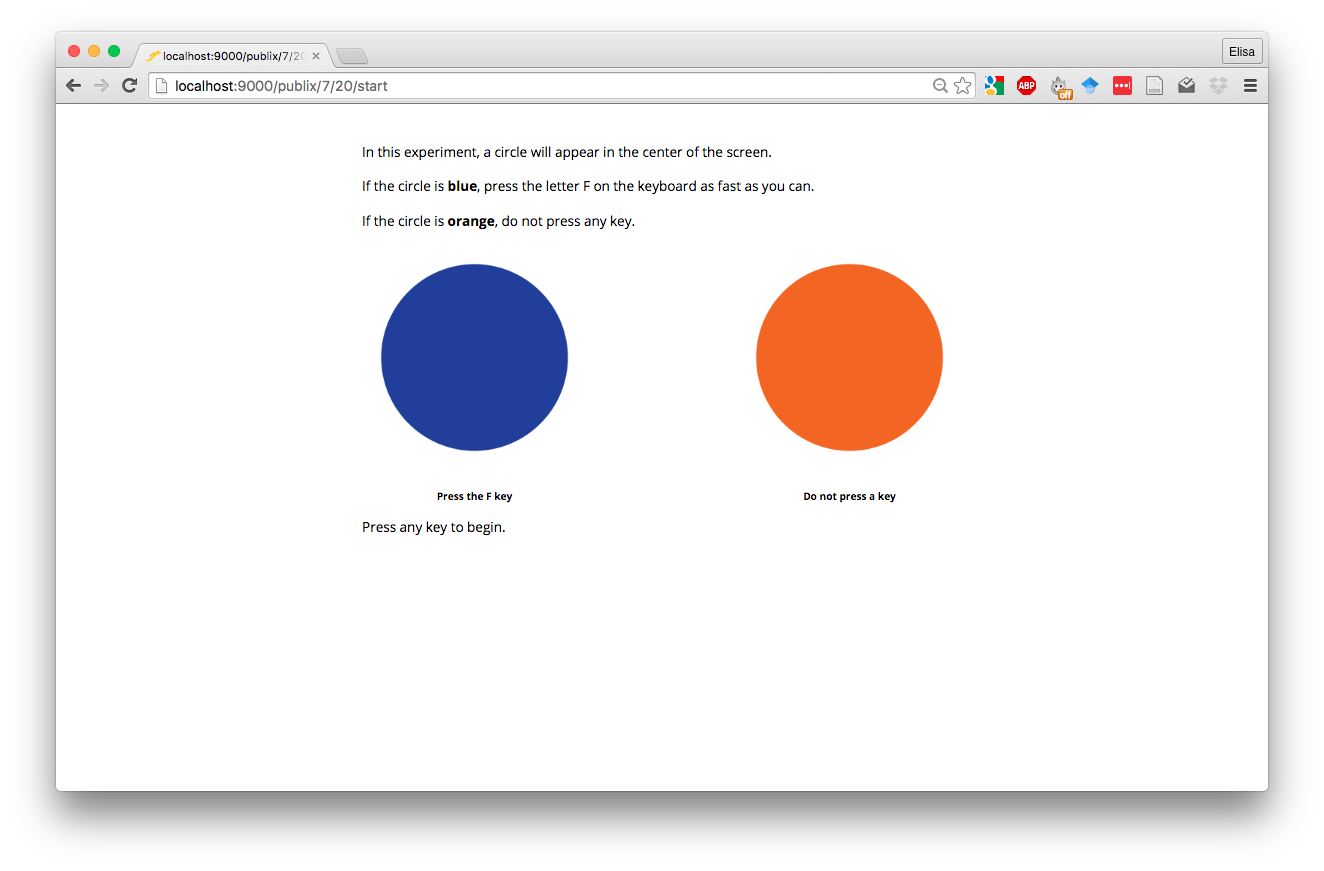 |
| Simple Reaction Time Task with Resume on Reload † | Go/NoGo task that continues the experiment where it was left after a reload in the browser | jsPsych 8 | Study session |  |
| Randomize Tasks Between Workers § | Template to randomly assign participants to conditions A, B, or C (with fixed numbers for each condition). | - | Batch session | 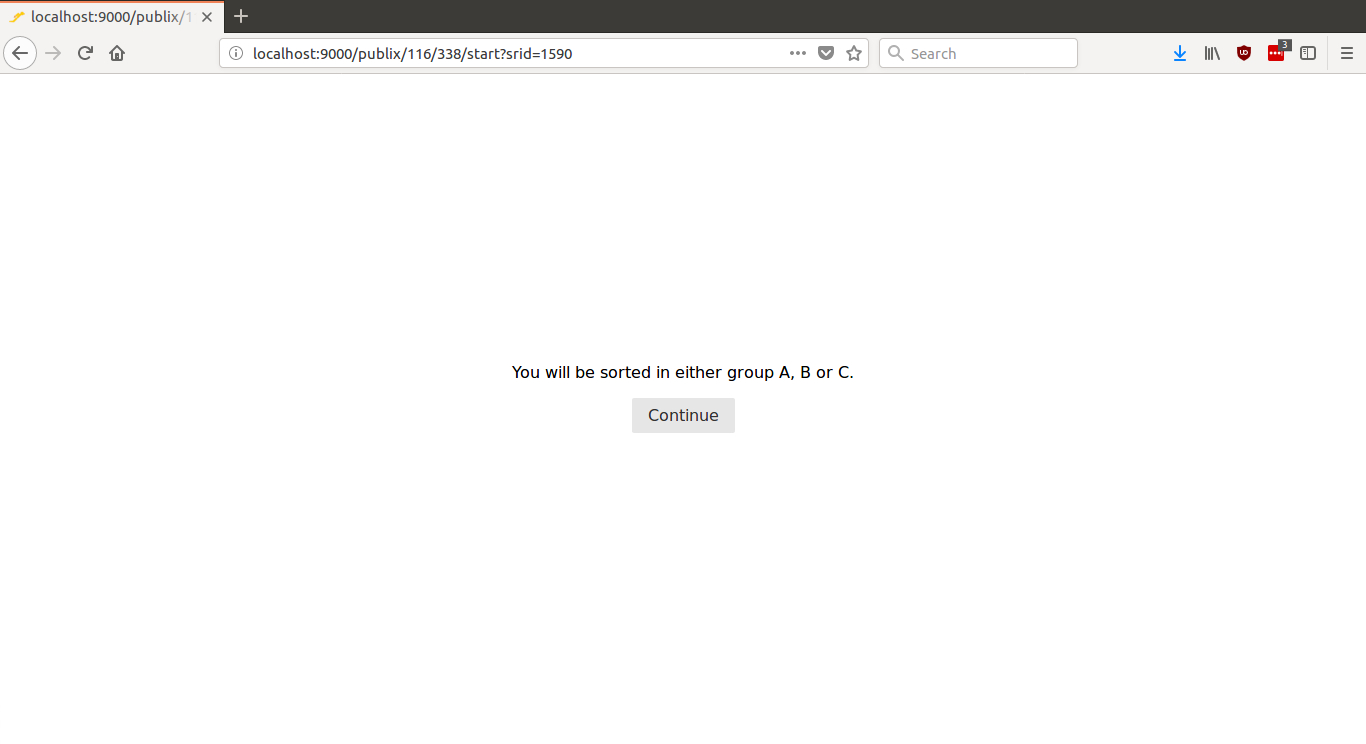 |
| Lexical Decision | Participants classify whether a string of letters is a word or a nonword. From factorsdb. | jsPsych | - | 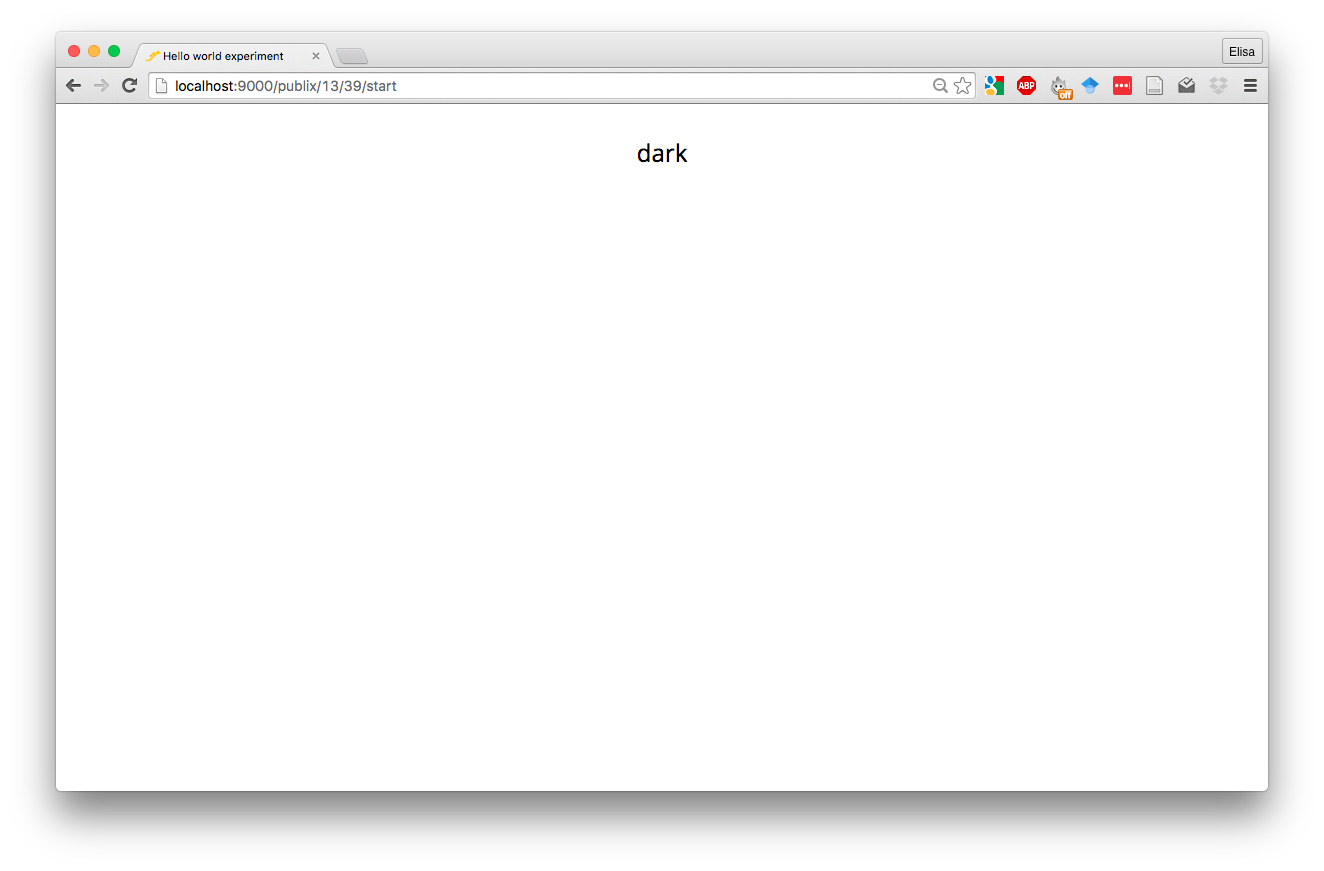 |
| Lexical Decision ∗ | An example of running OpenSesame experiments with JATOS via OSWeb. | OpenSesame, OSWeb | - | 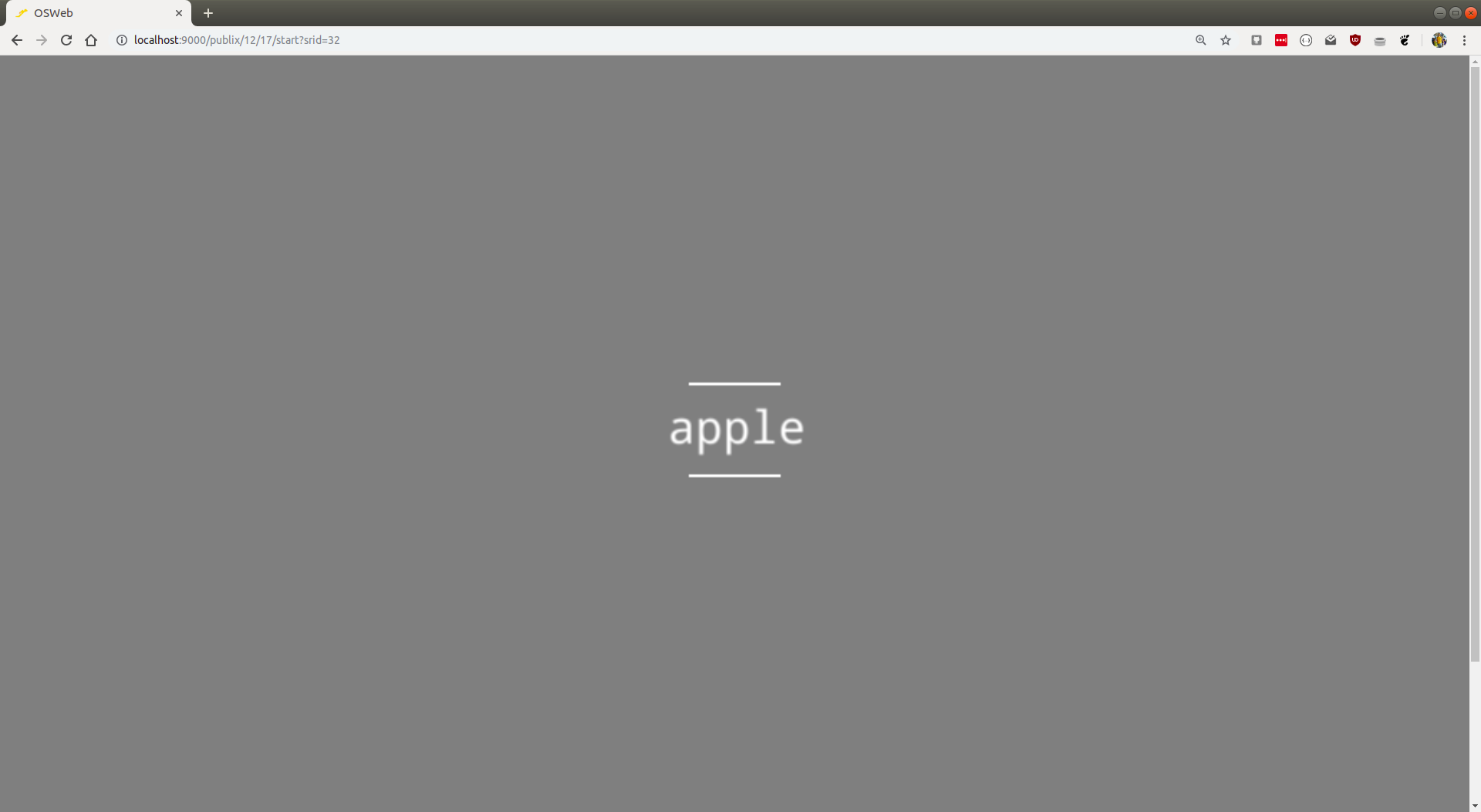 |
| Random Dot Kinematogram ∗ | A random dot kinematogram (RDK) for online visual psychophysics and the use in web browsers. By Sivananda Rajananda, Hakwan Lau, Brian Odegaard (preprint). | jsPsych | - | 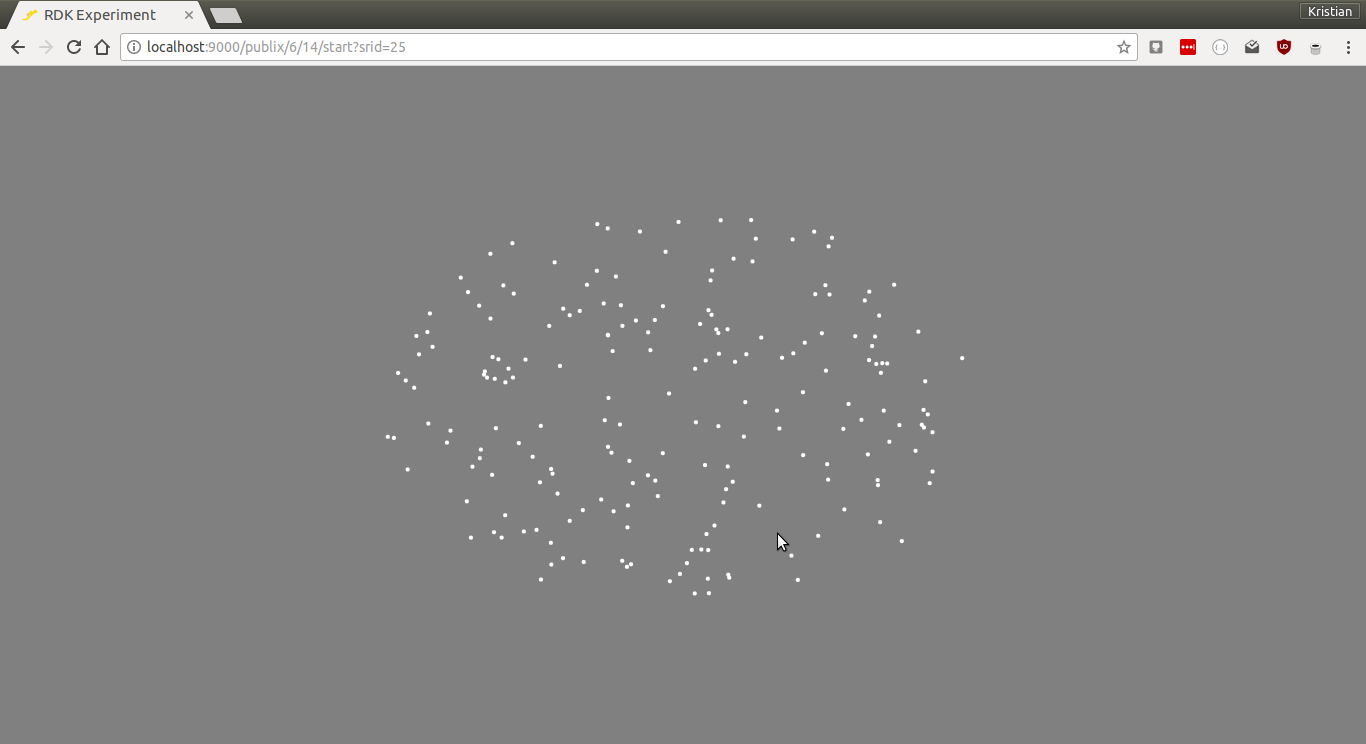 |
| Demographic and Survey Questions ∗ | SurveyJS is an easy to use library with a great online interface to create surveys and questionaires. | SurveyJS | - | 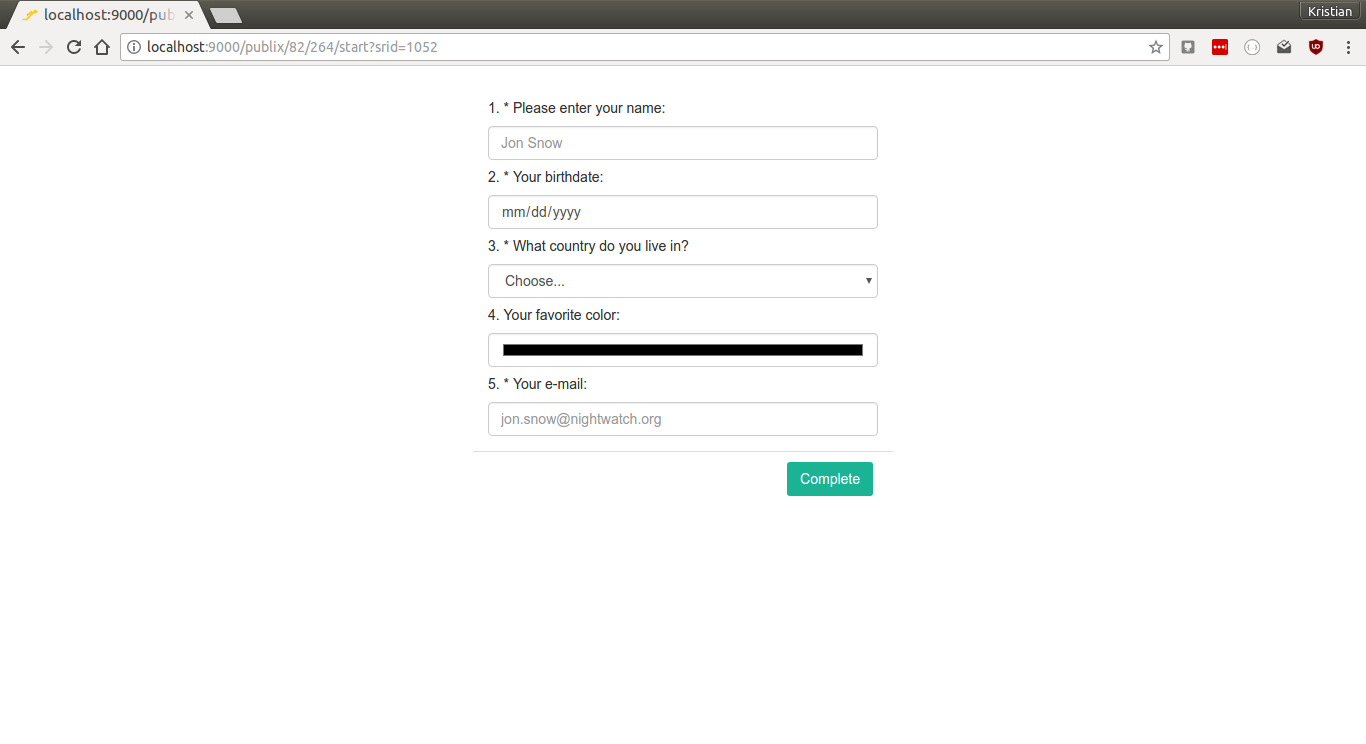 |
| Instructions with Google Slides ∗ | Use Google Slides to make an quick, easy and versatile instruction page. Might not be the prettiest, but it does the job. | Google Slides | - | 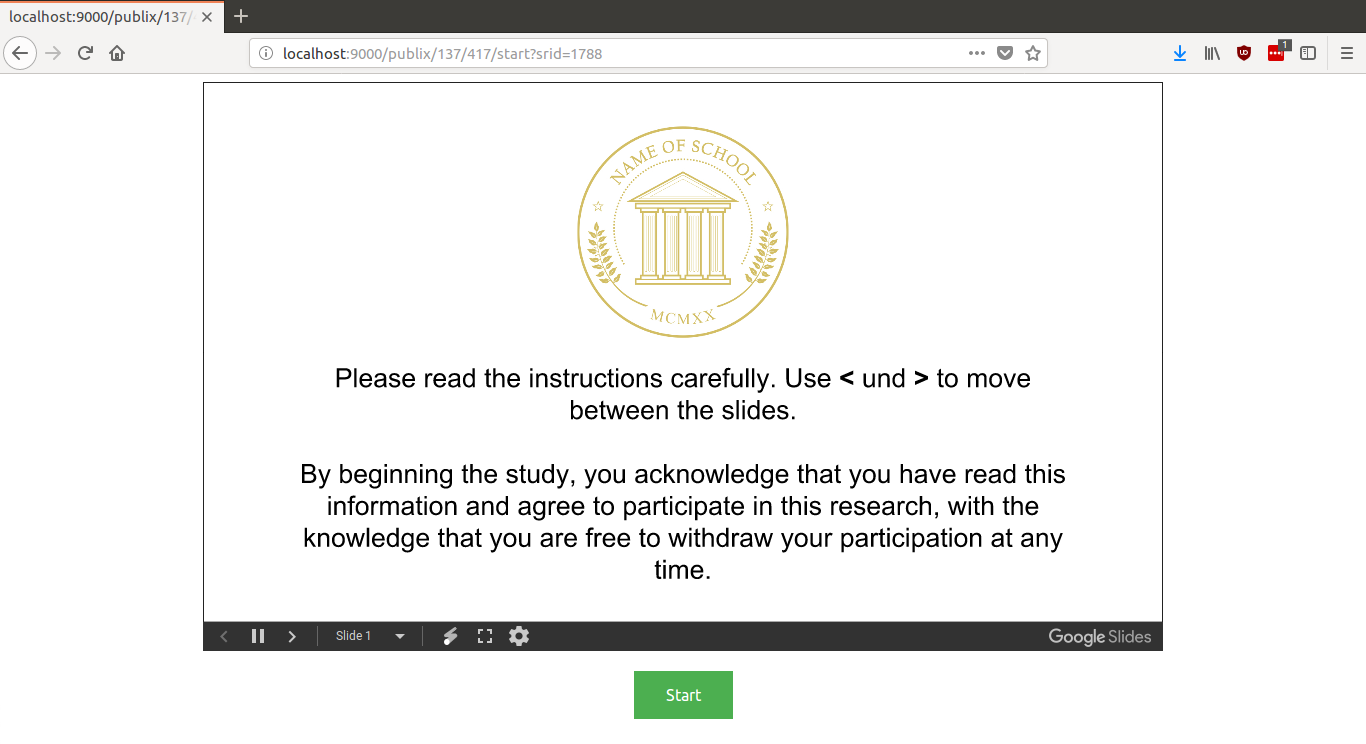 |
| p5.js 2D Graphics Showcase ∗ | p5.js is a graphics library to easily create 2D and 3D graphics without deeper knowledge of how those graphics are rendered. Additionally one can add user interaction, video, sound, or capture from the webcam or the mic. Have a look at their example section. | p5.js | - |  |
| Video | Shows how to embed a video with HTML 5 by using the browsers video player, YouTube, or the video.js JavaScript library. | - | - | 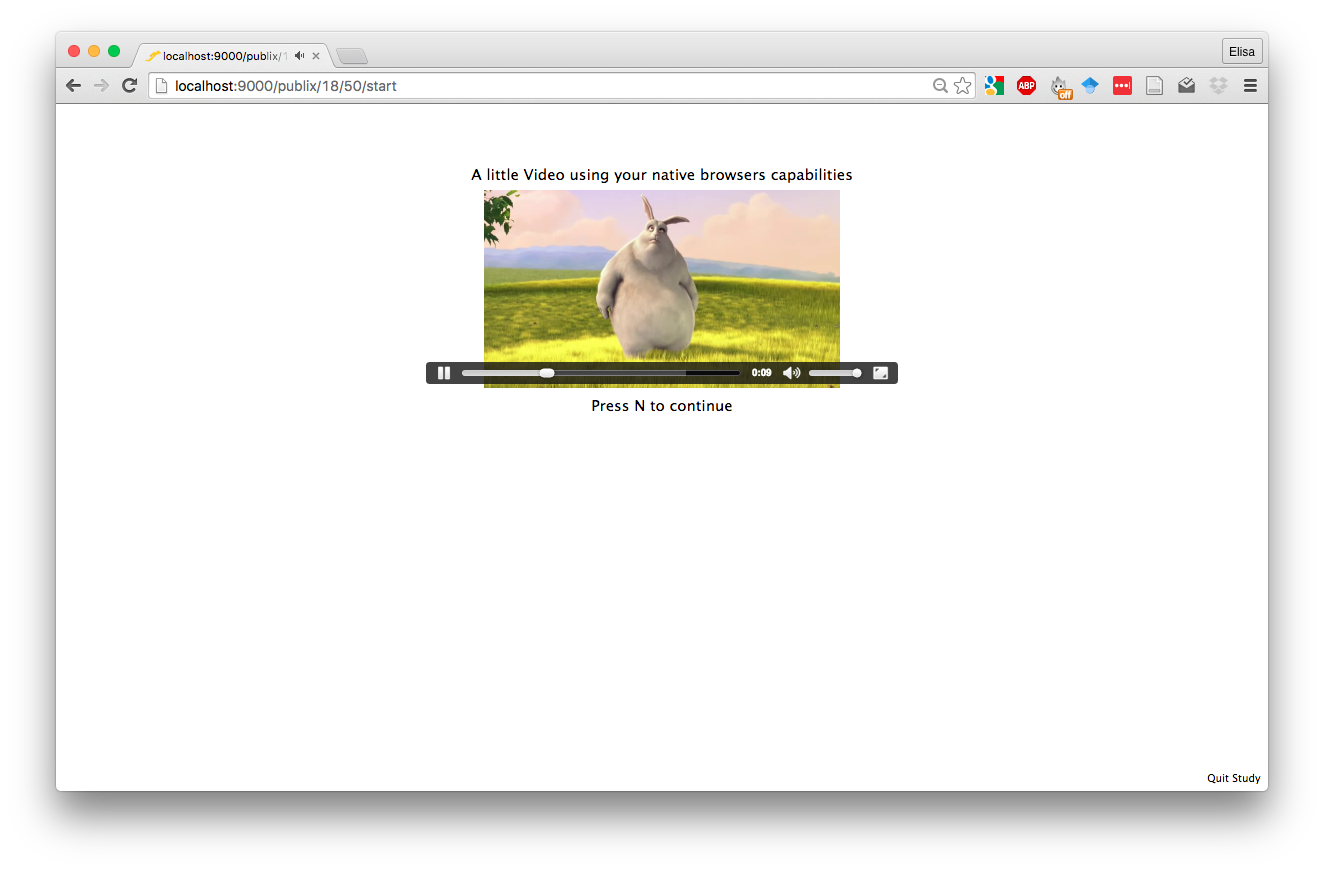 |
| Results in CSV | Simple example of how to store results in CSV format. | - | - | 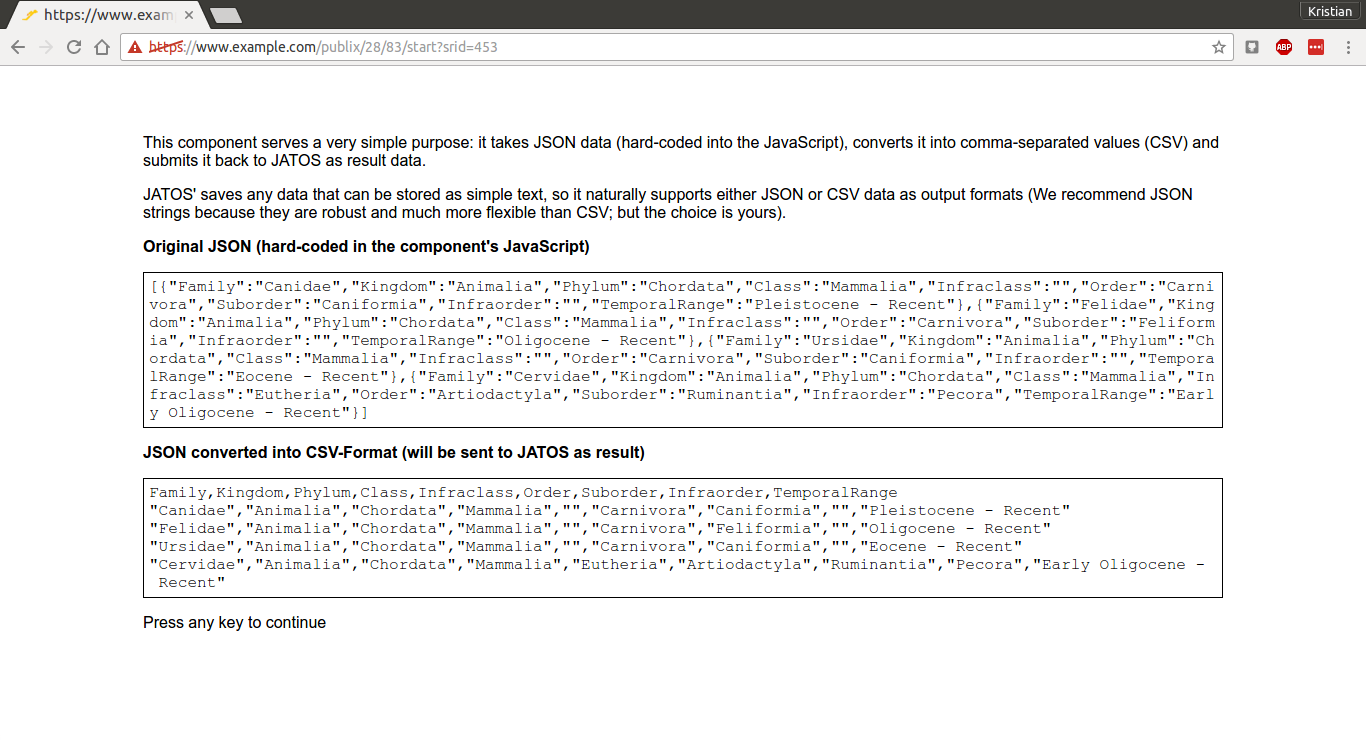 |
| Simple Consent Form | Simple example of a consent form with text and buttons ‘I agree’ and ‘Cancel’. | - | - | 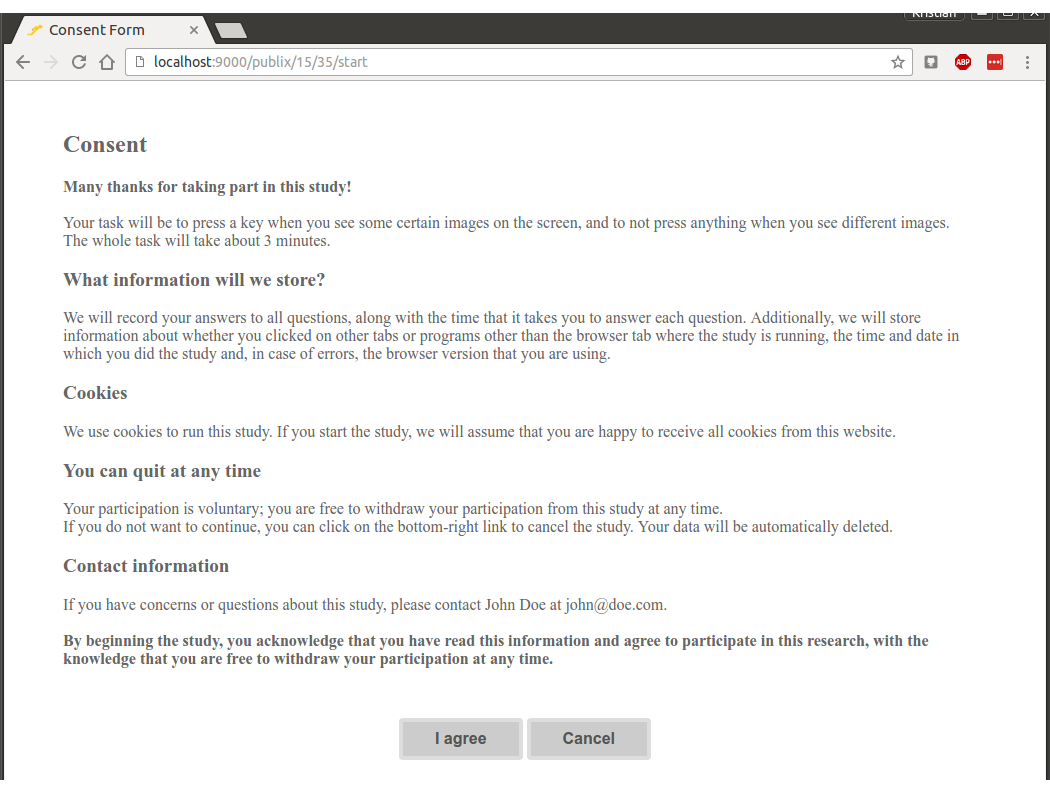 |
| Introduction and Consent with Preview Feature | This mobile-friendly example just has an introduction component that includes a consent text. | - | Preview links |  |
| Prolific Example § | Example on how to redirect in the end of the study back to Prolific | - | - |  |
| 2048 Game | This addictive game is created by Gabriele Cirulli. | - | - | 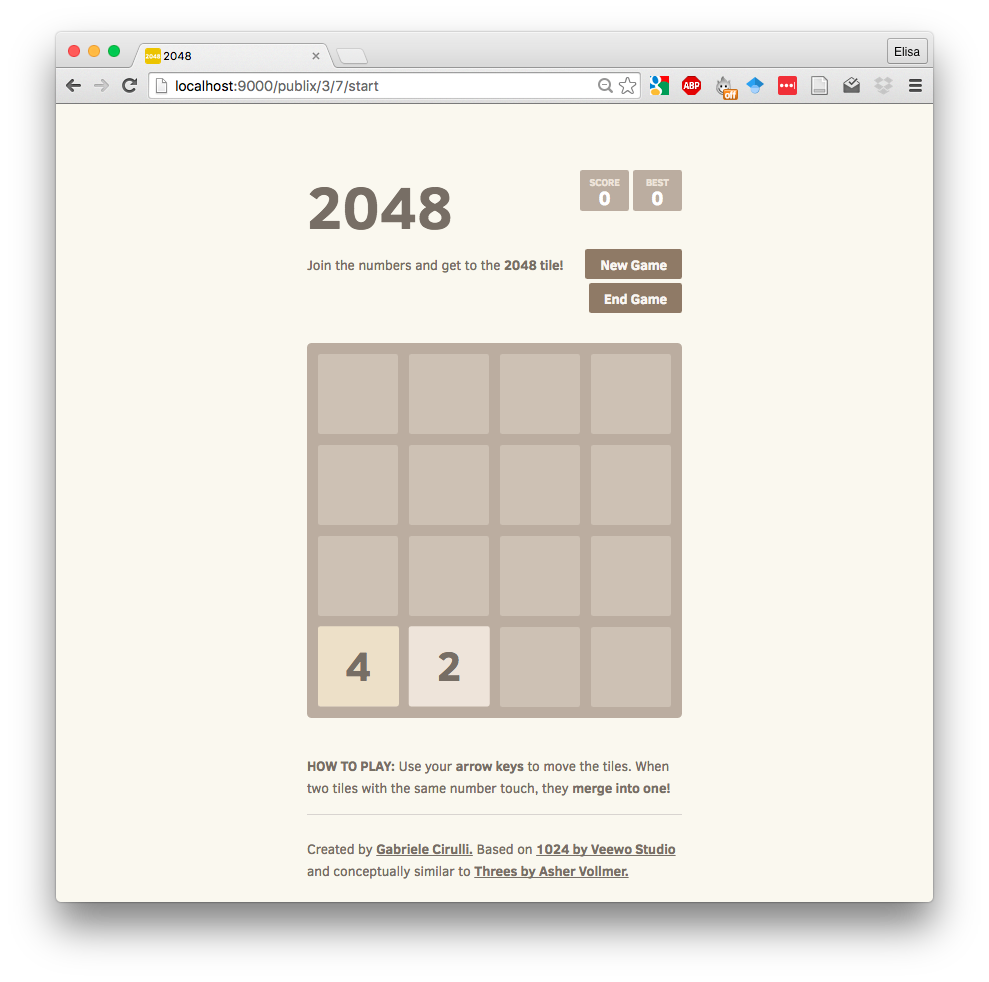 |
| Plot Data | A slightly different use for JATOS: as a regular server to display an HTML page that displays study results. | Highcharts | - | 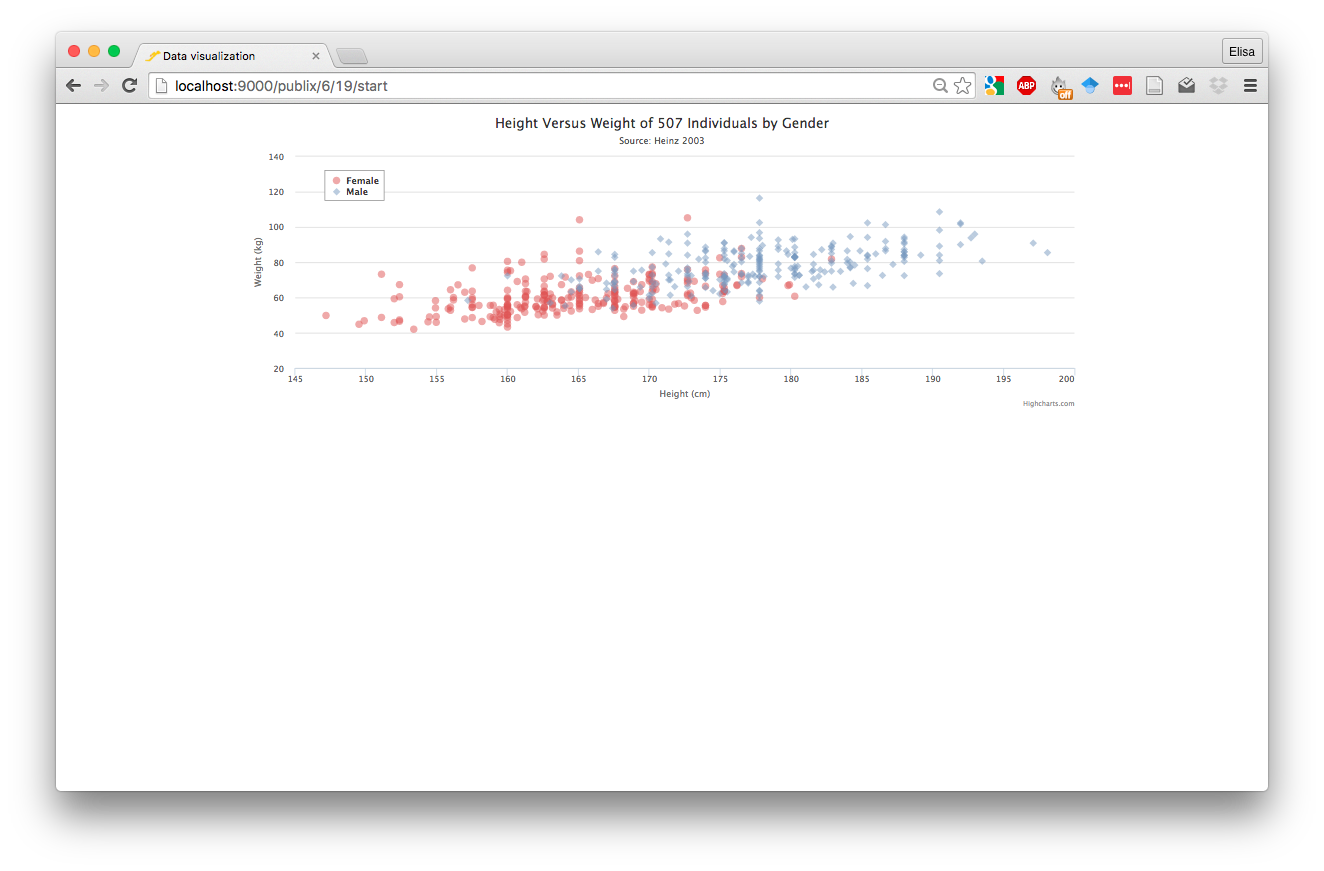 |
| Attentional Capture ∗ | Standard task to show how to use OSWeb with JATOS. | OpenSesame, OSWeb | - | 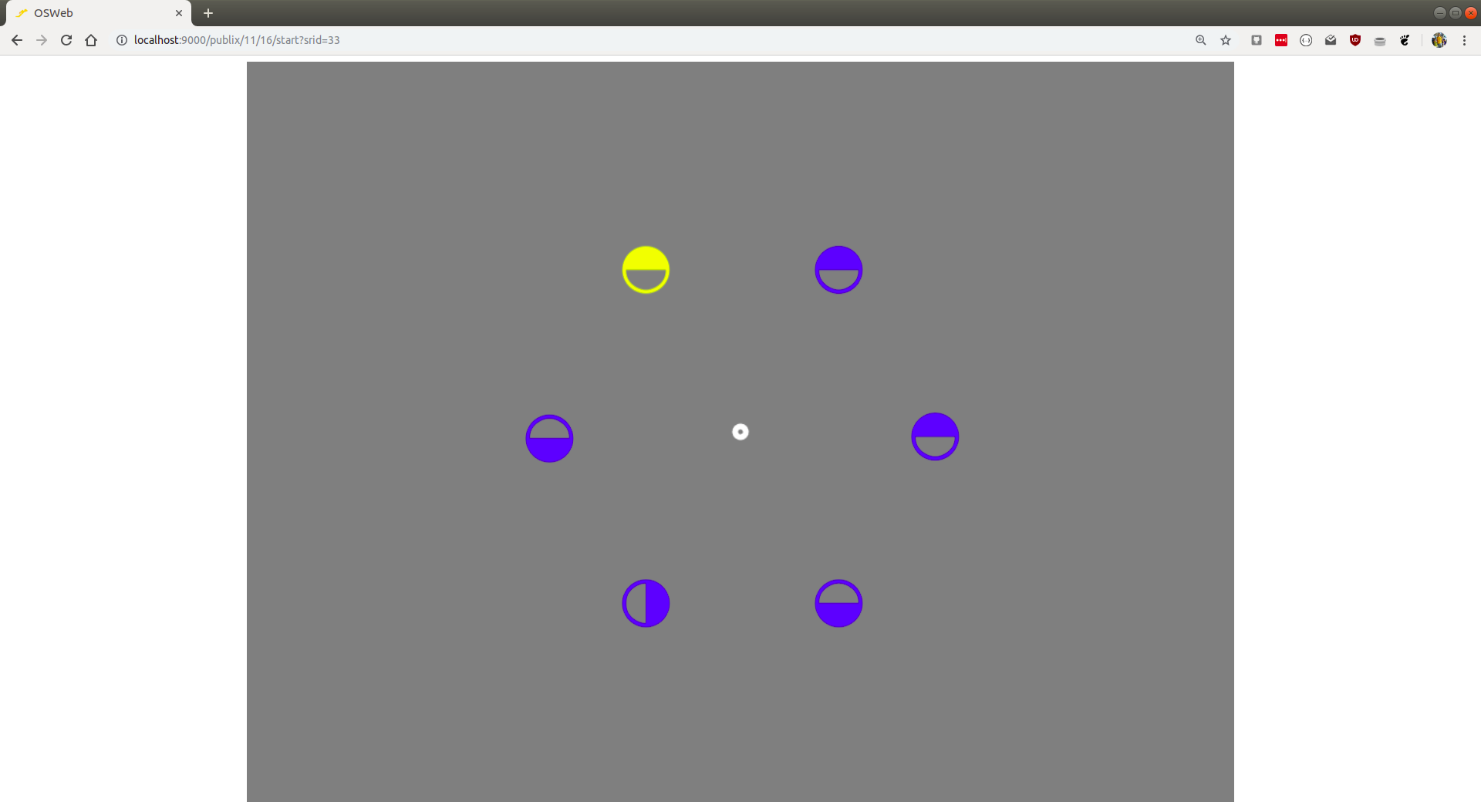 |
| Survey (Self Regulation) | A standard questionnaire. Taken from expfactory. | JQuery Form | - | 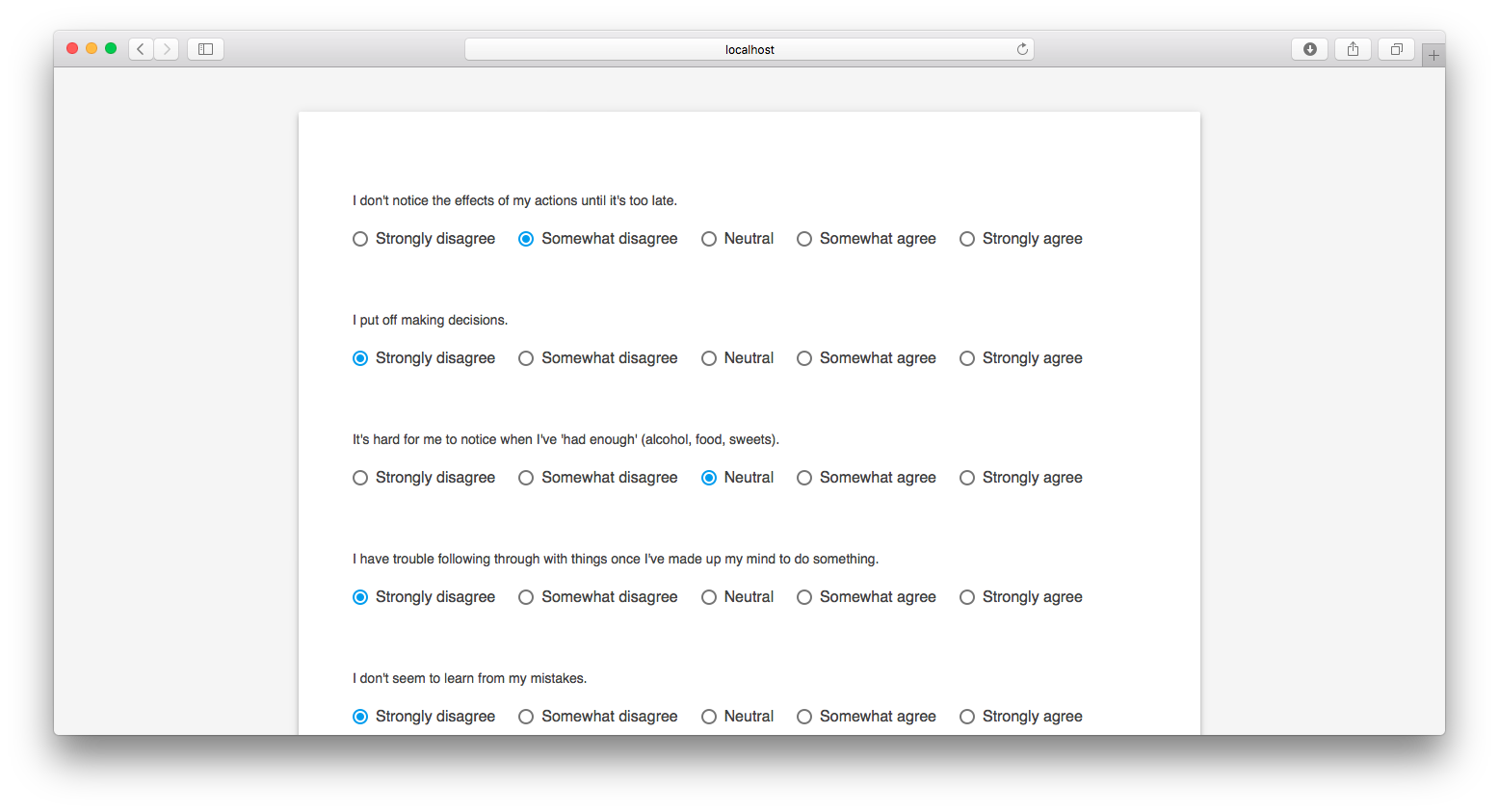 |
| Invaders Game | Classical arcade game. From Phaser's examples page. | phaser.io | - | 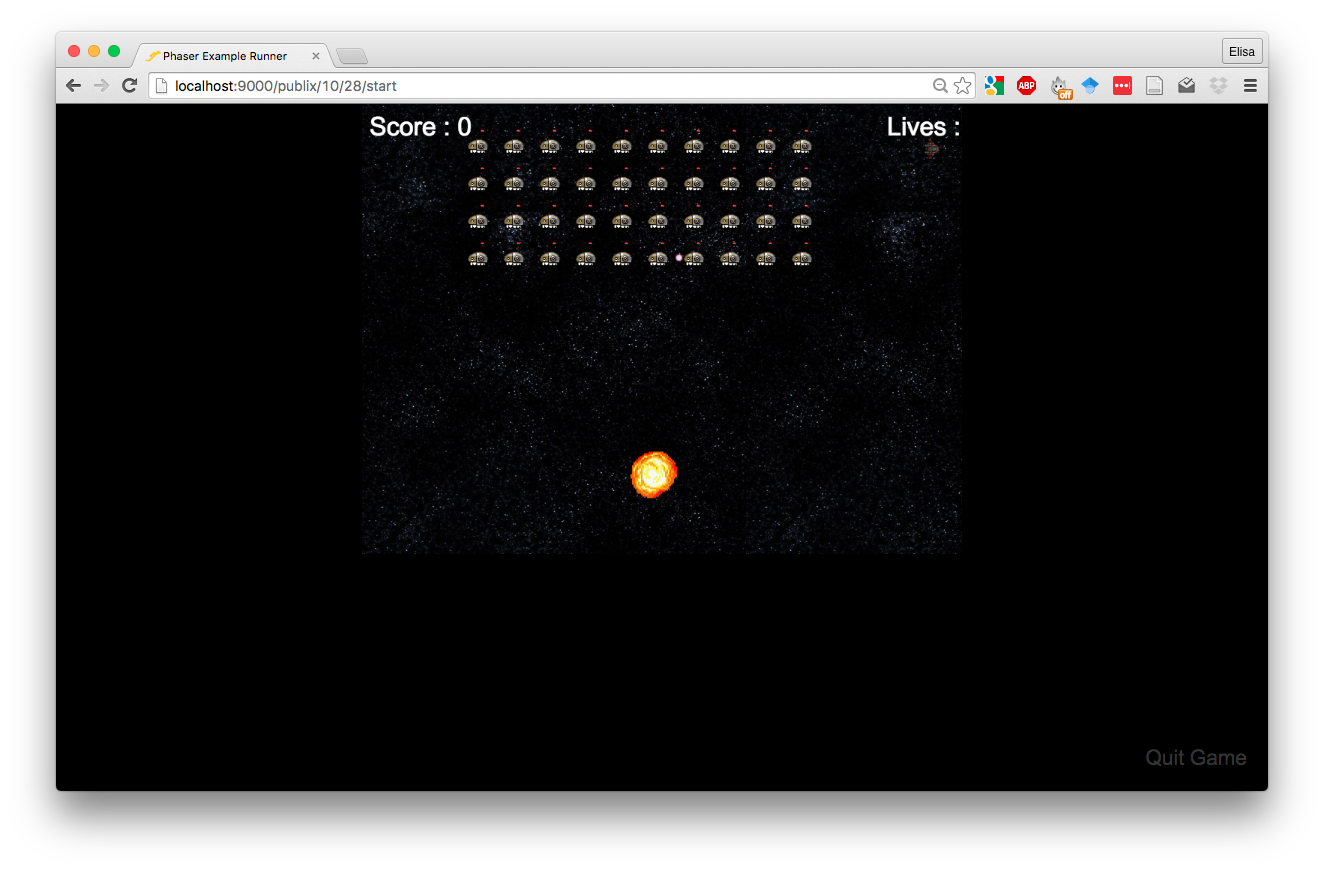 |
| HexGL Game ∗ | Futuristic racing game by Thibaut Despoulain. | HTML5, WebGL | - | 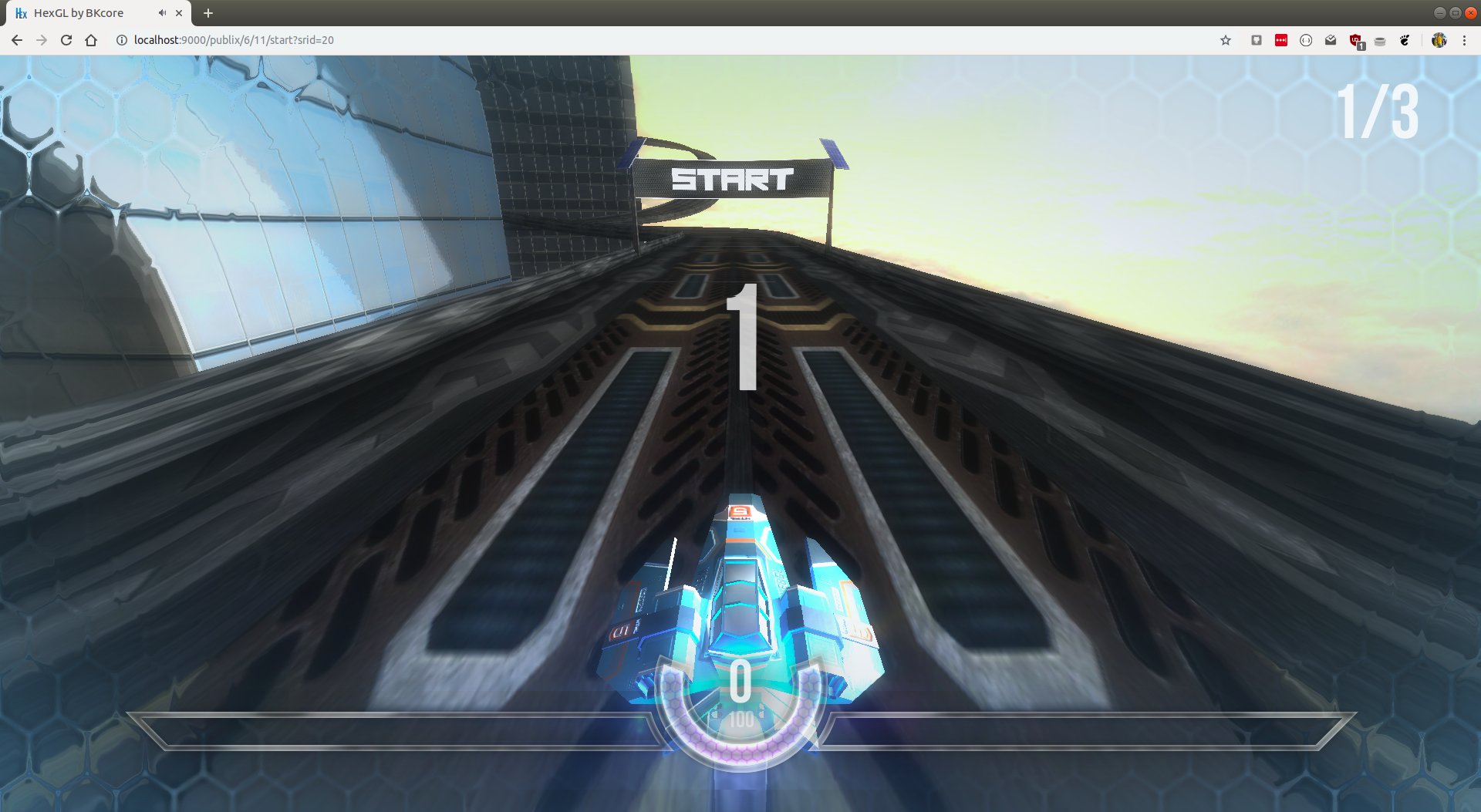 |
| Mouse Tracking with Arithmetics § | Following Pinheiro-Chagas, P., Dotan, D., Piazza, M., & Dehaene, S. (2017). Finger tracking reveals the covert stages of mental arithmetic. Open Mind: Discoveries in Cognitive Science, 1(1), 30–41. doi:10.1162/opmia00003 | - | - | 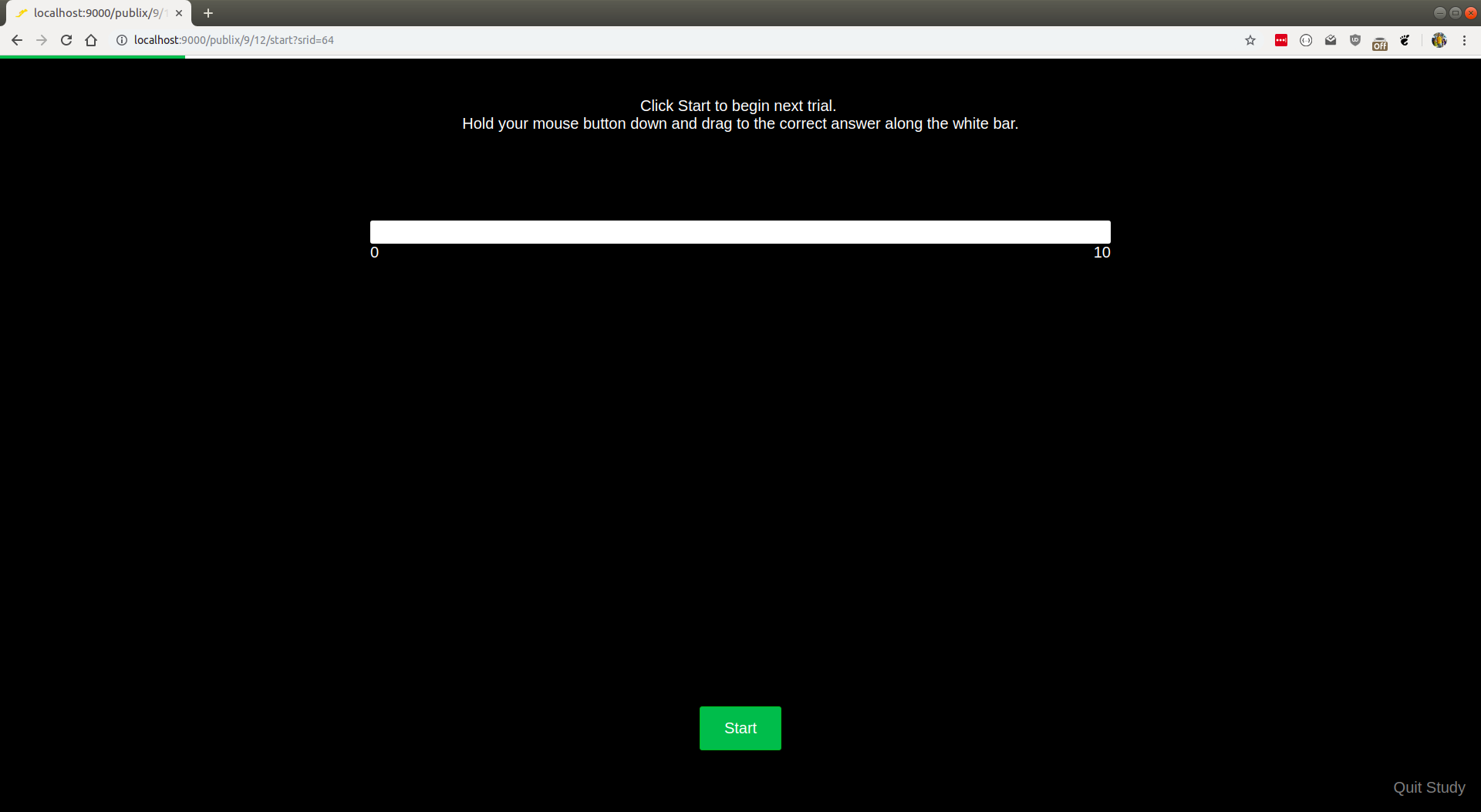 |
| Binocular Rivalry § | Using Gabor patches to demonstrate binocular rivalry with a Google Cardboard | - | - | 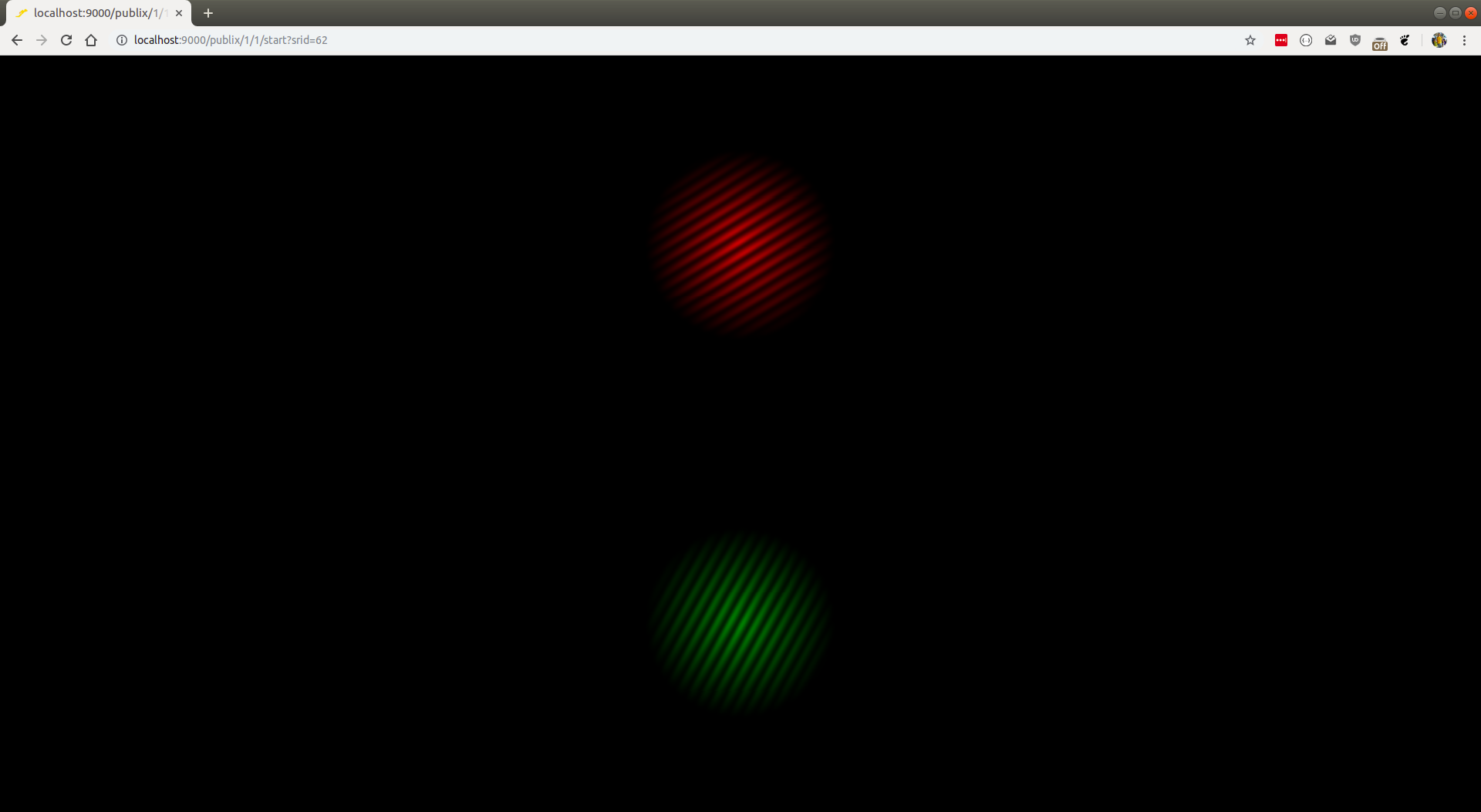 |
| Bistable Perception § | - | - | - | 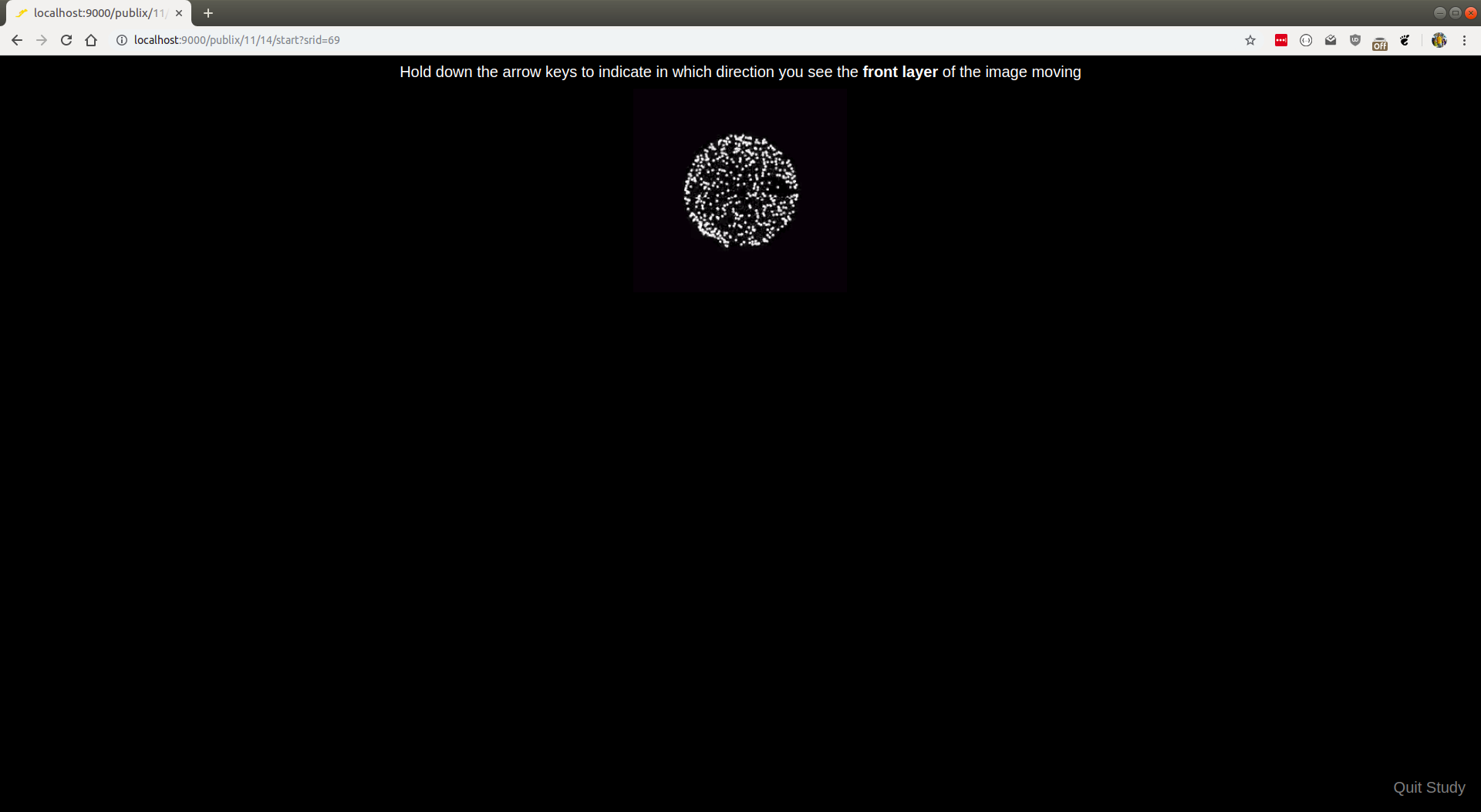 |
| Change Blindness § | - | - | - | 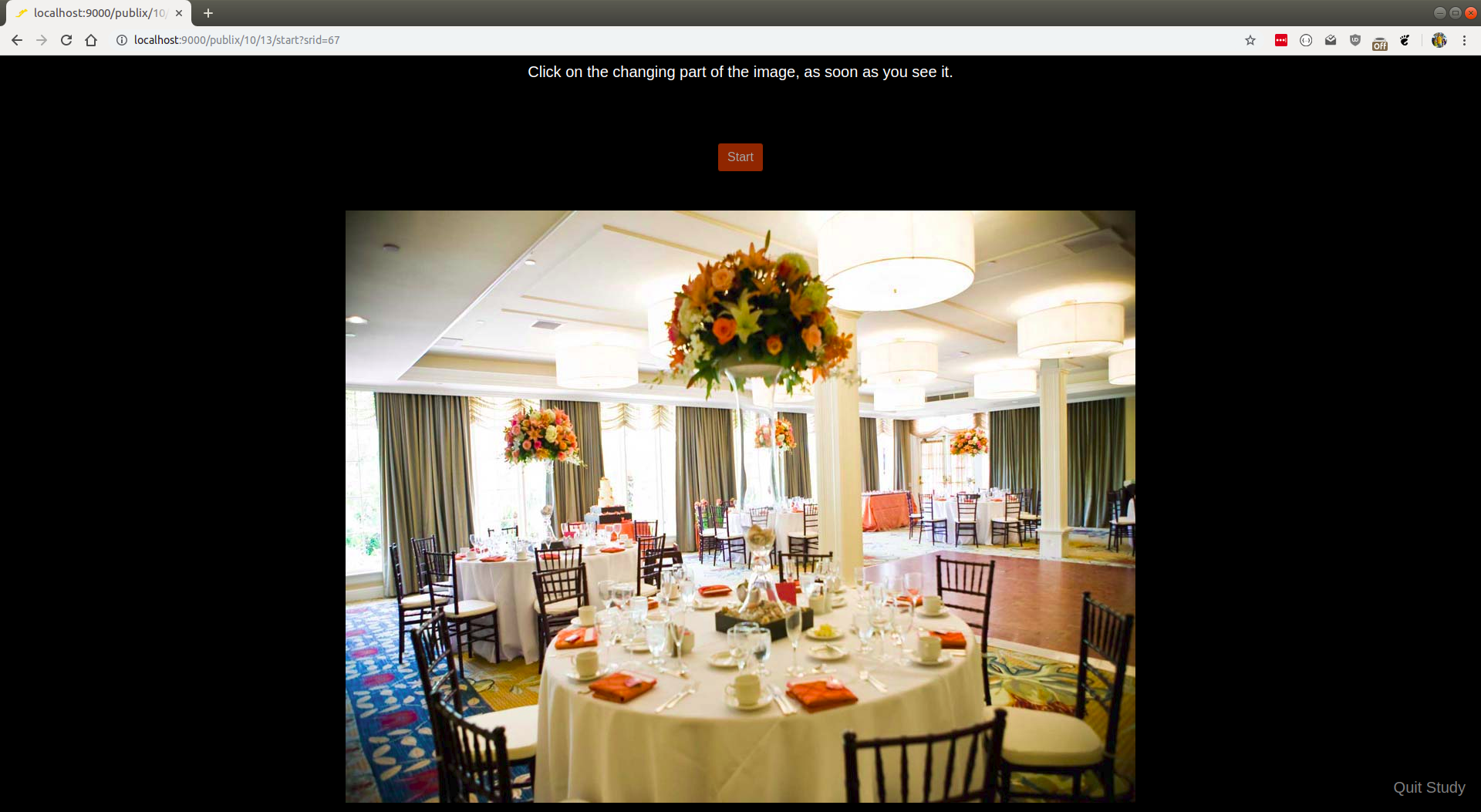 |
| Dot Densitity Metacognition § | - | - | - | 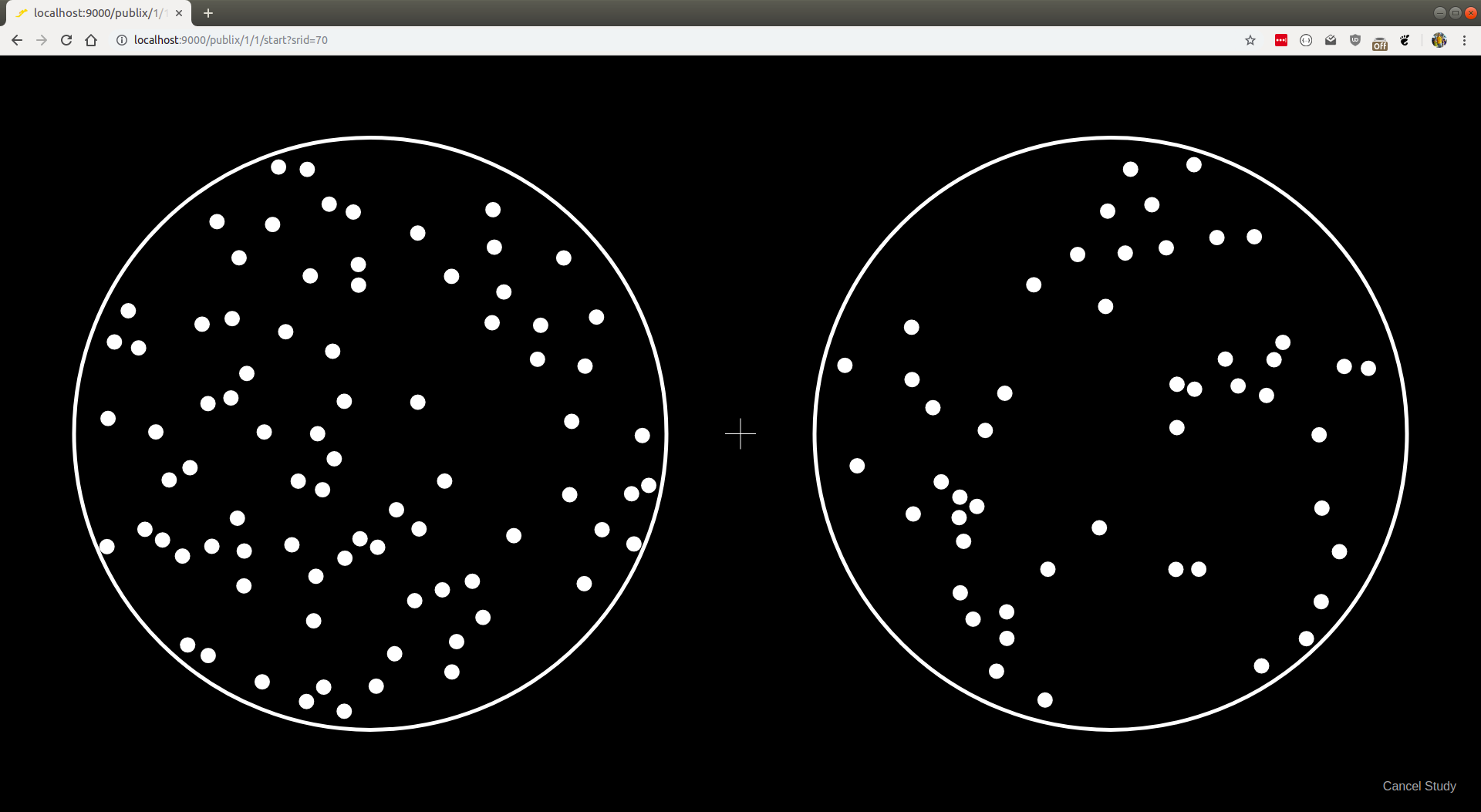 |
| Deary-Liewald task with PsyToolkit § | Taken from PsyToolkit's experiment library | PsyToolkit | - | 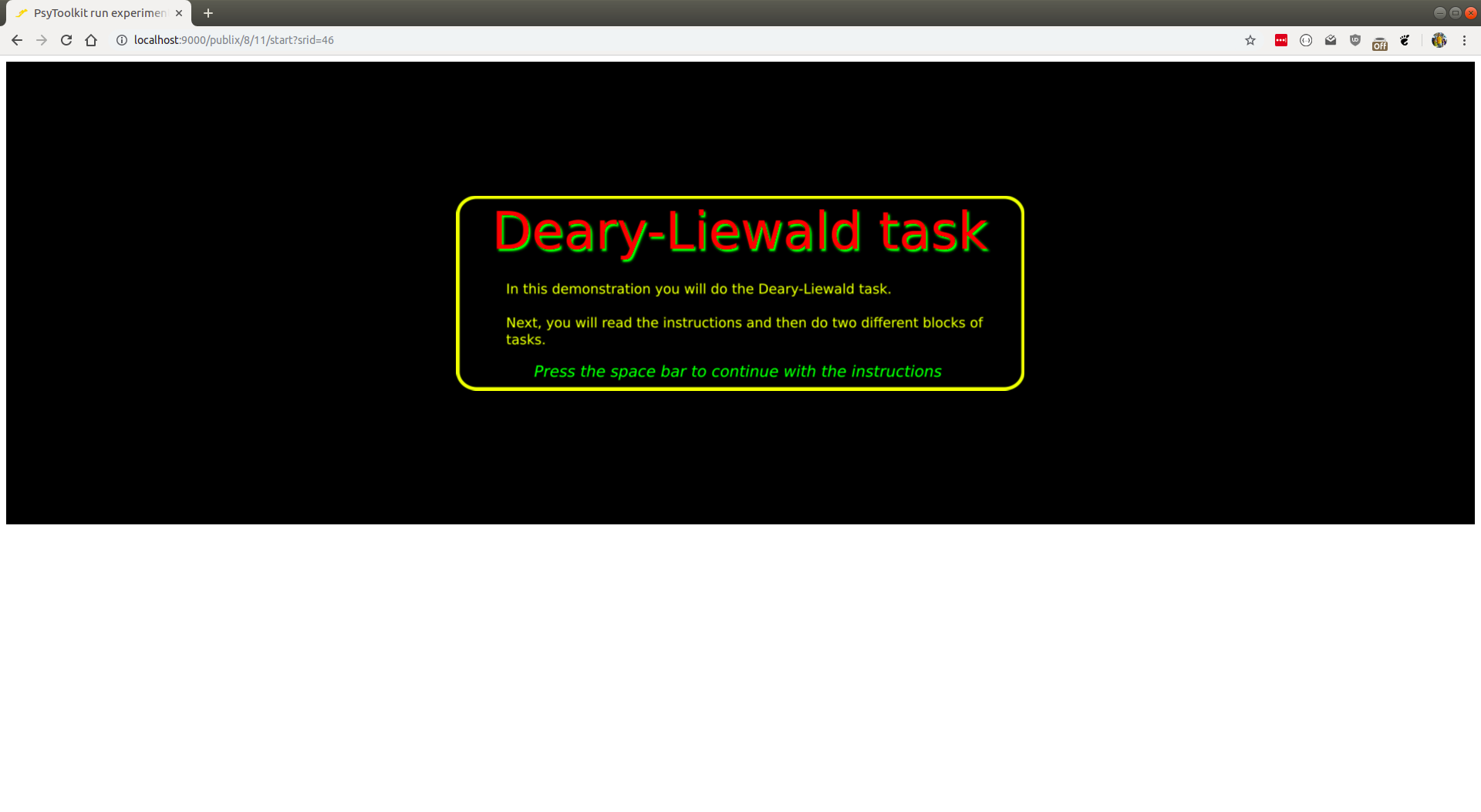 |
| Clock Drawing § | Submit images as result data to JATOS by converting them into base64-encoded text. | jsPsych | - | 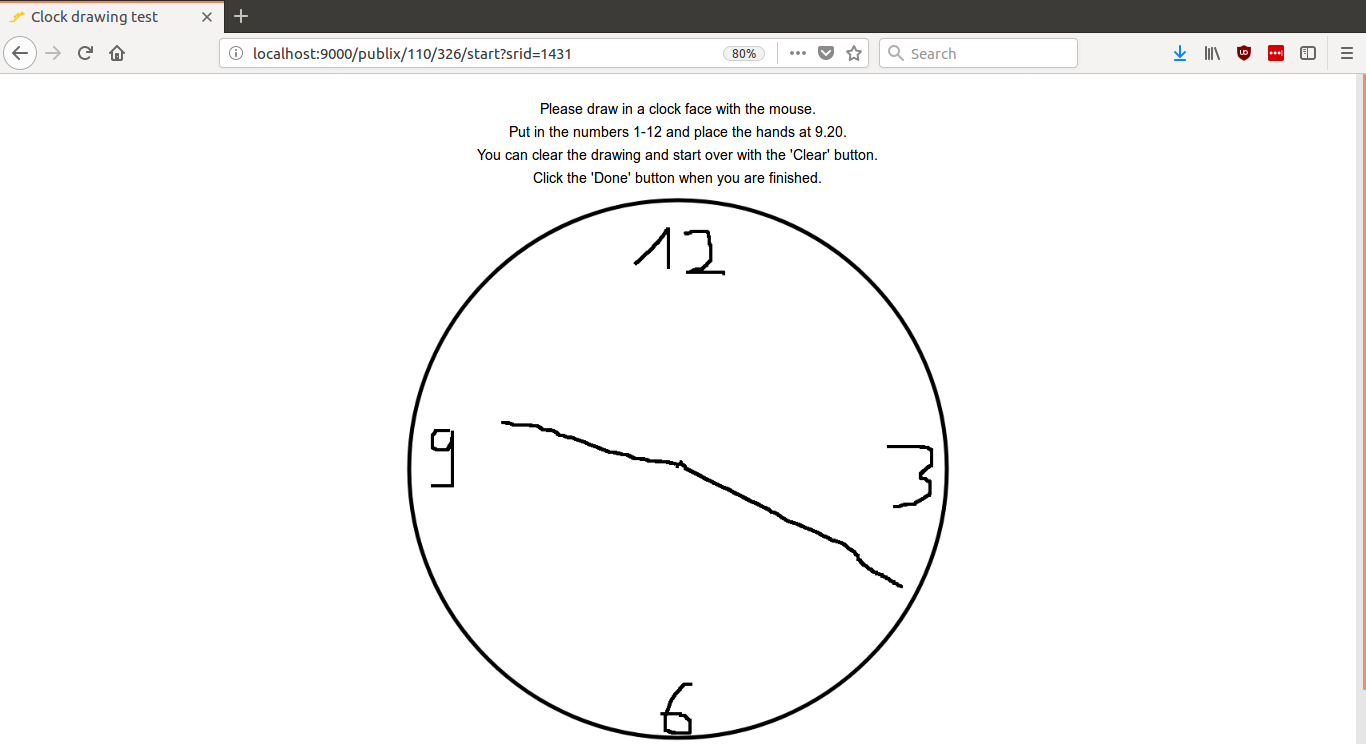 |
| Potato Compass | Drag & drop elements. | interact.js | - | 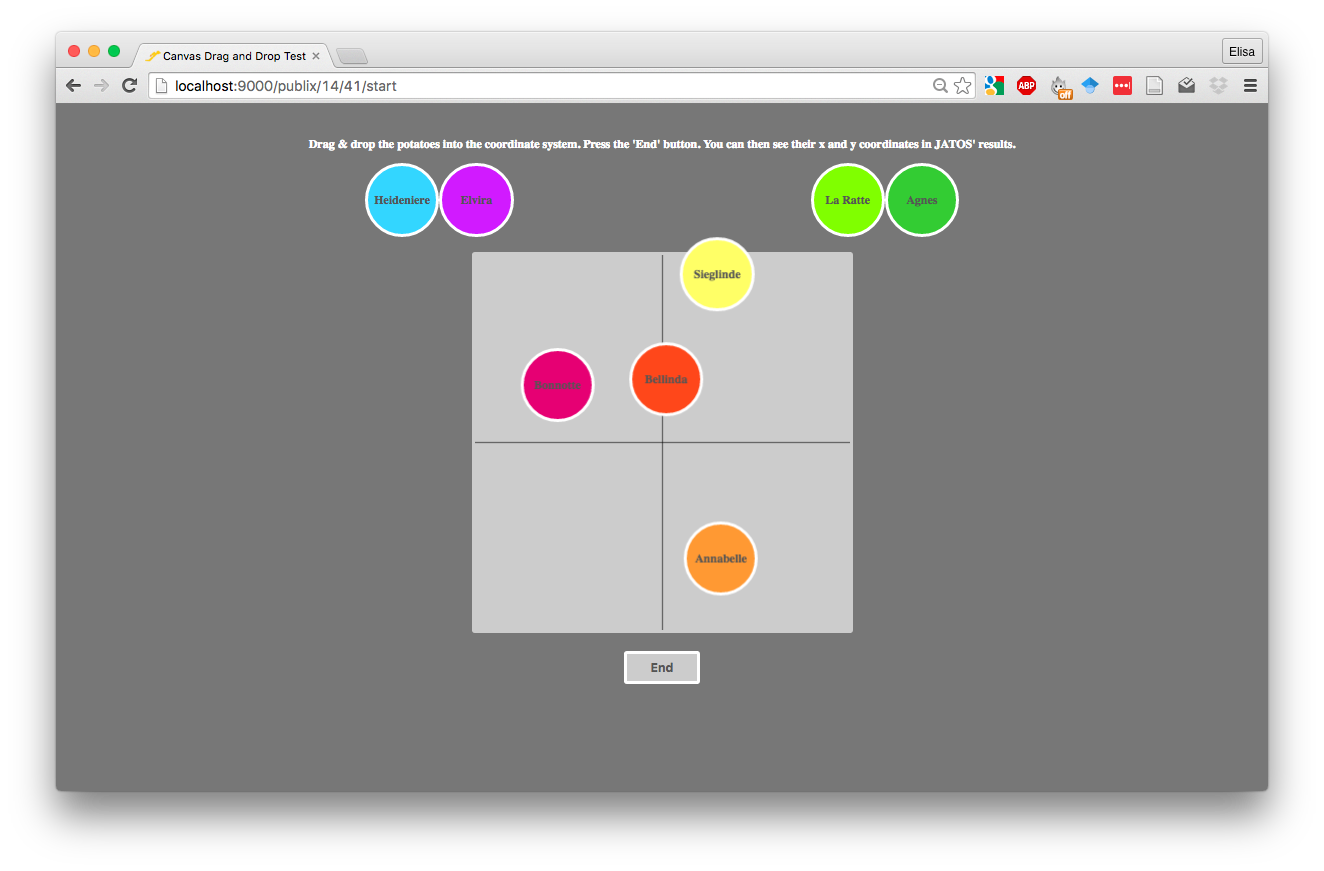 |
| Audio Recording † | Record audio and upload as a file to JATOS. Bases on web-dictaphone and uses getUserMedia and MediaRecorder API for recording audio snippets, and The Web Audio API for visualizations. | - | - | 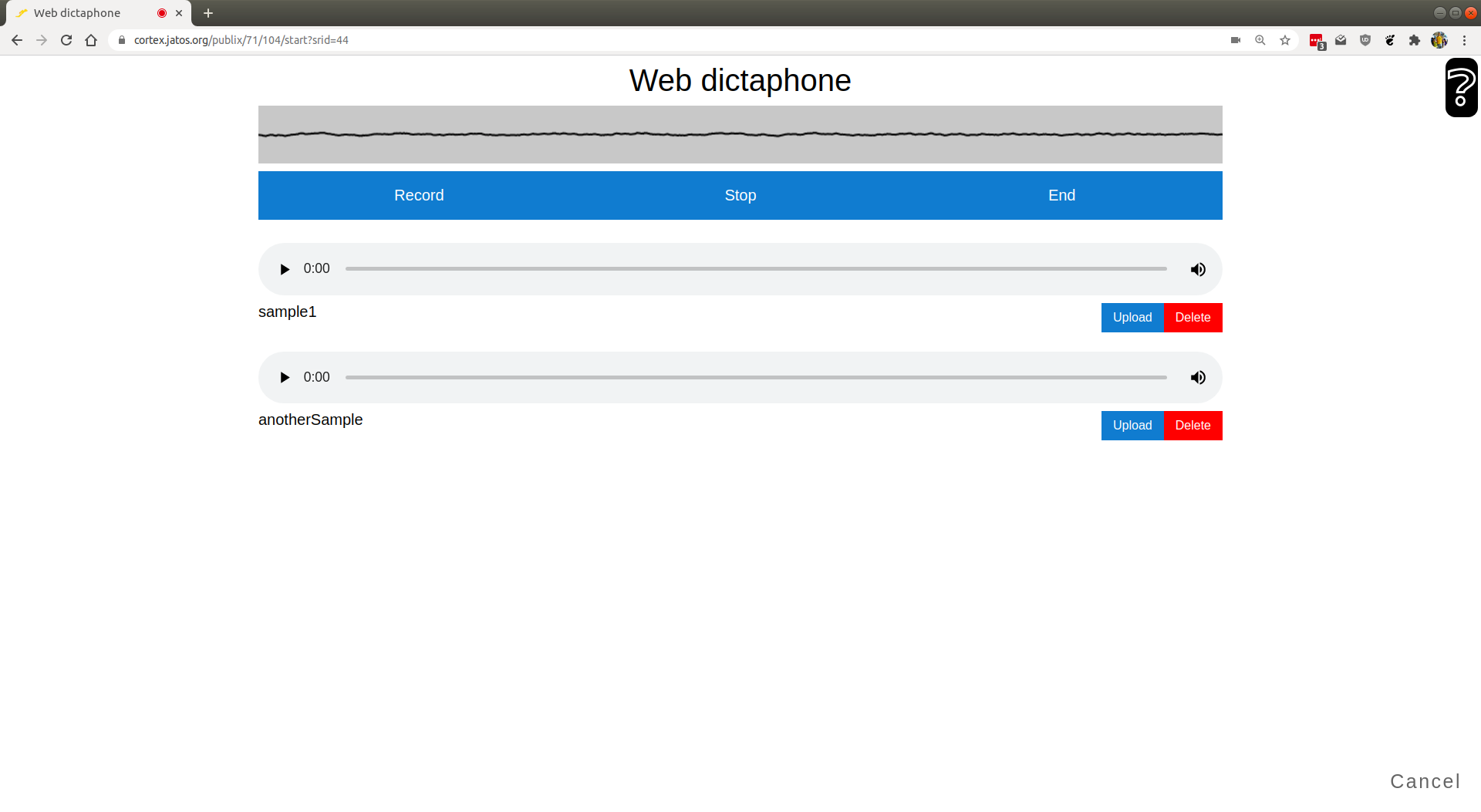 |
| Video Recording † | Record a video with the webcam and upload the data as a file to JATOS | - | - | 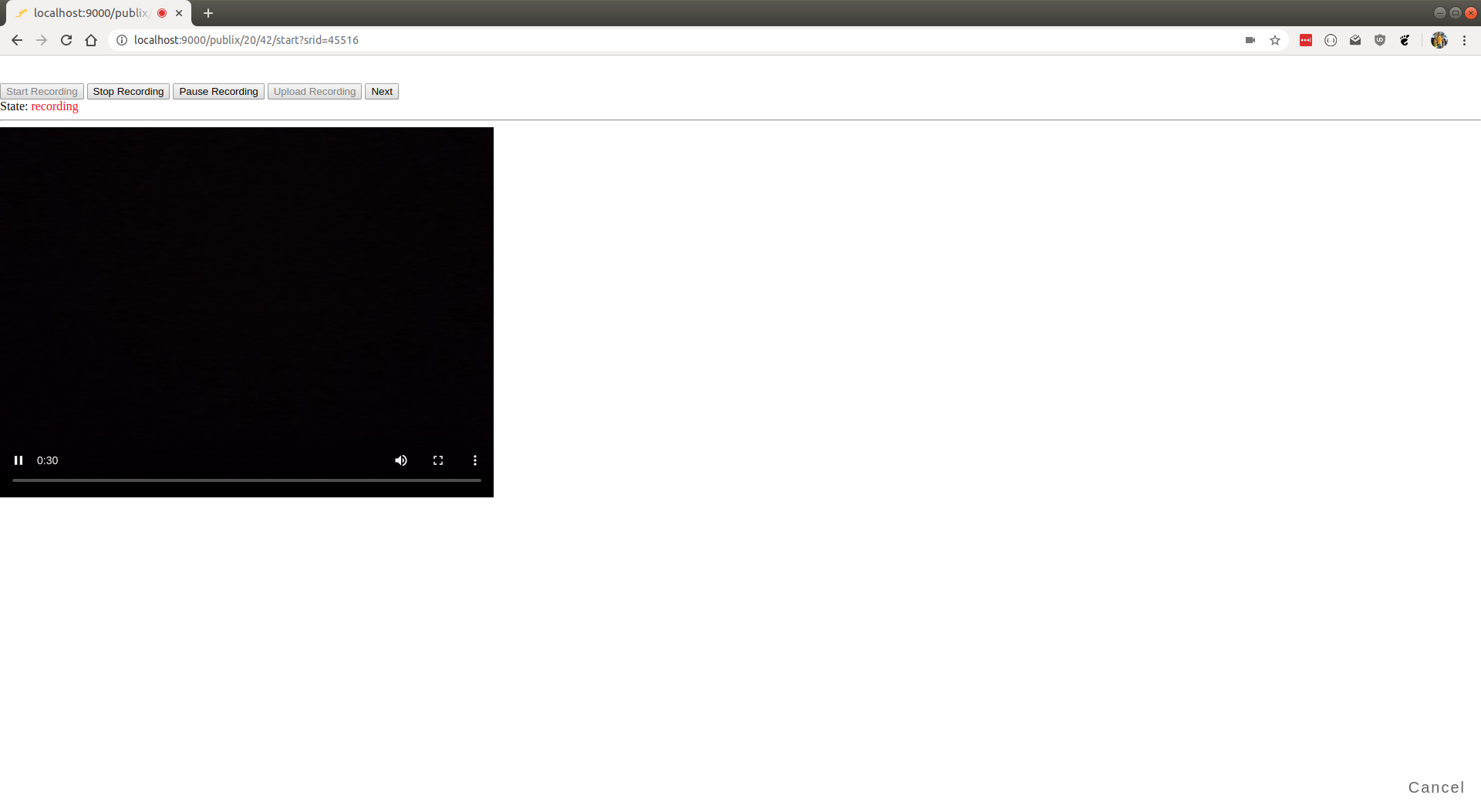 |
| Drawing † | Simple drawing app that lets you upload the image to JATOS | - | - | 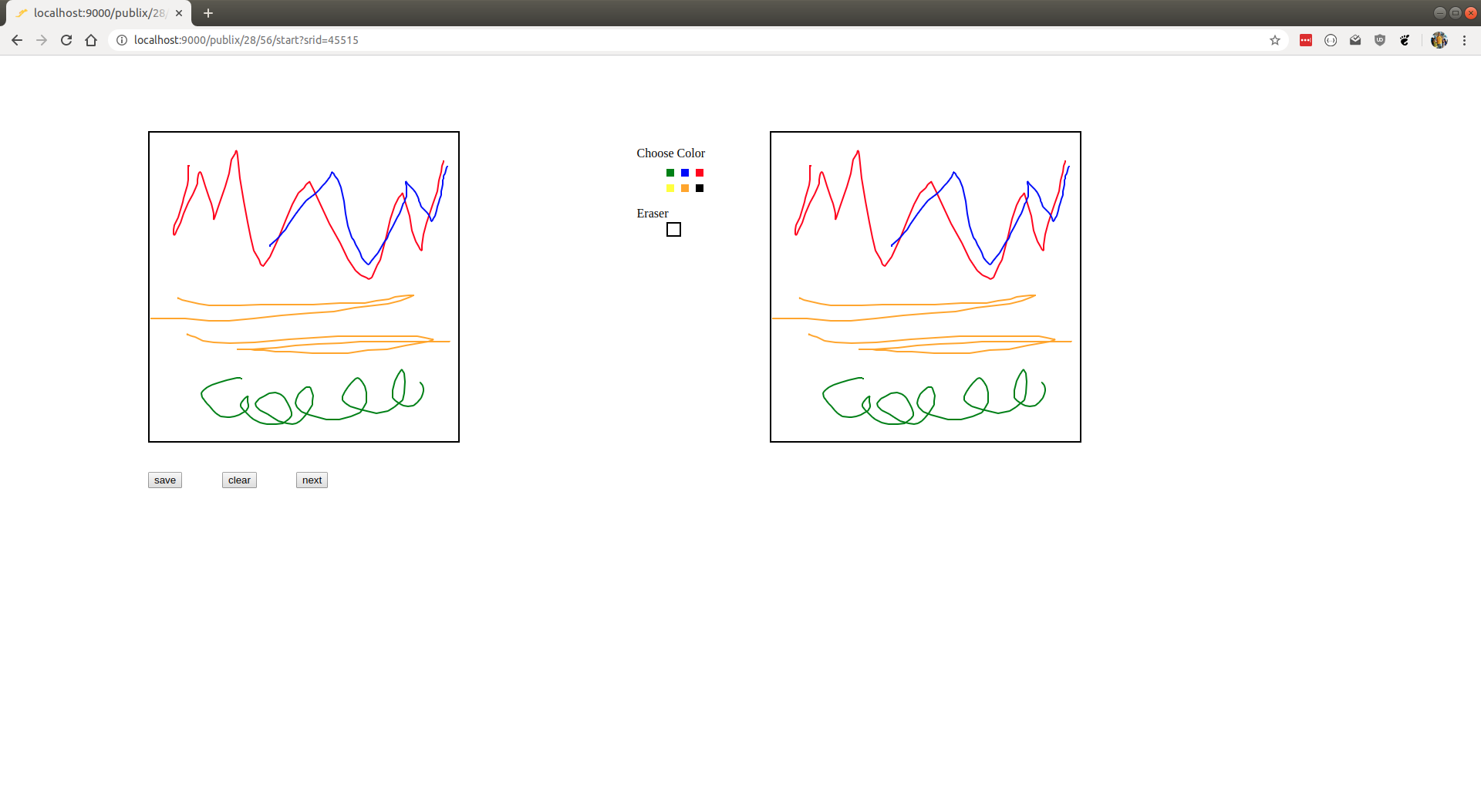 |
| Browser Information and Worker Tracking § | Gets information about the participants browser, computer and location | - | - | 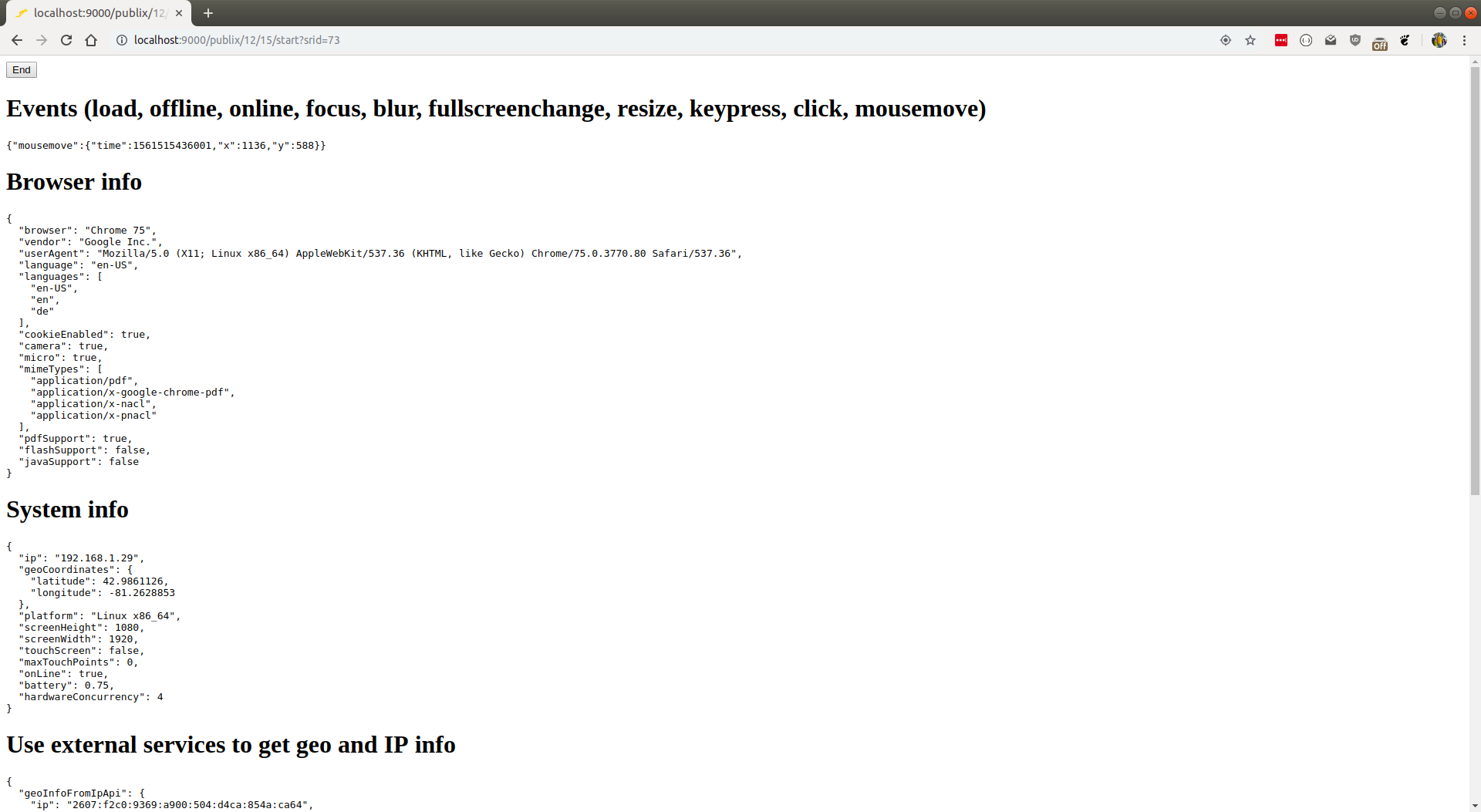 |
| Study, Group, and Batch Session § | See JATOS’ three different session types in action. | - | Study, Group, and Batch session data | 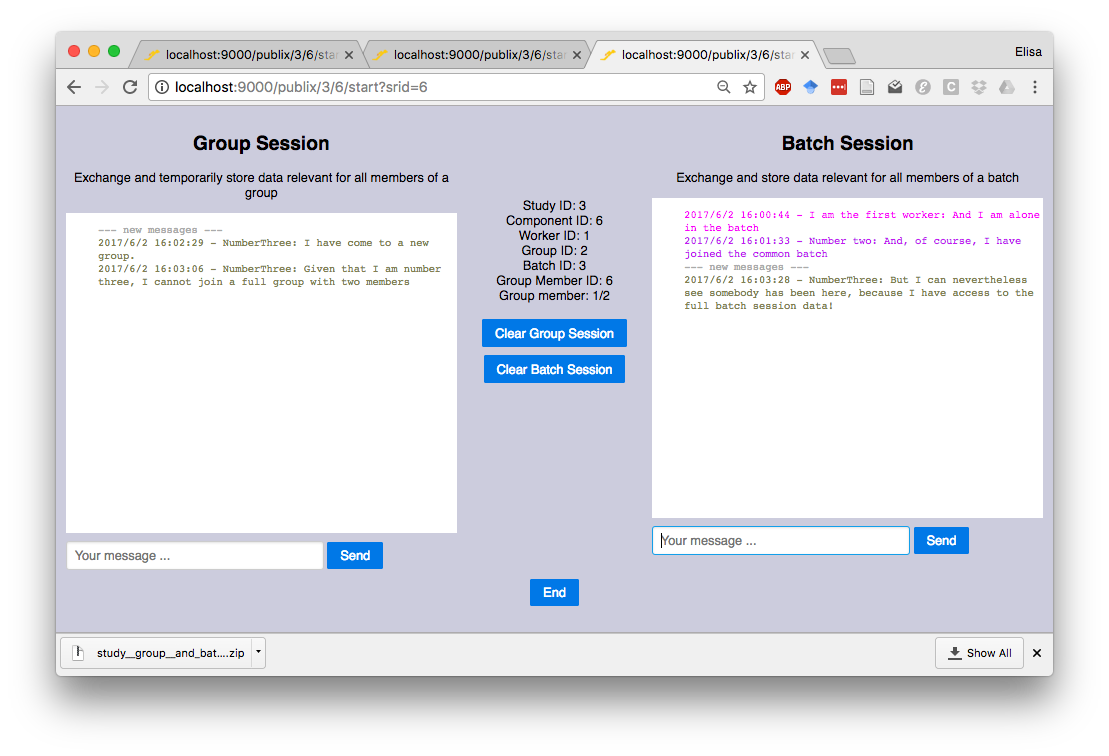 |
| Group Chat ∗ | Let members of a group talk to each other. | - | Group Session, Group Broadcast Message | 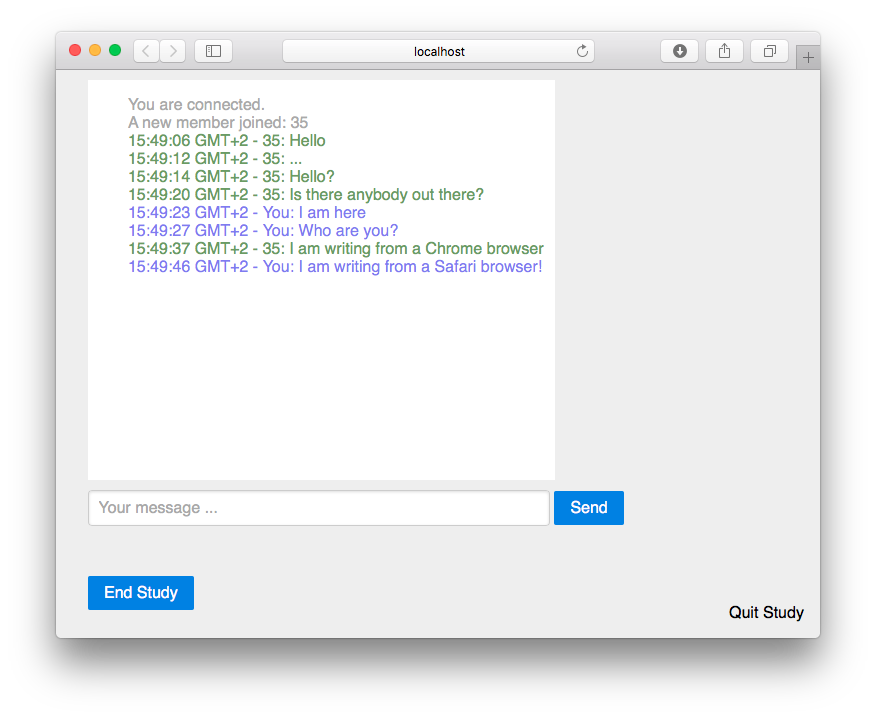 |
| Batch Chat ∗ | Let members of a batch talk to each other. | - | Batch Session |  |
| Chat with Markdown and Emojis § | Chat that builds on top of Batch Chat and adds suports for Markdown and emojis | - | - | 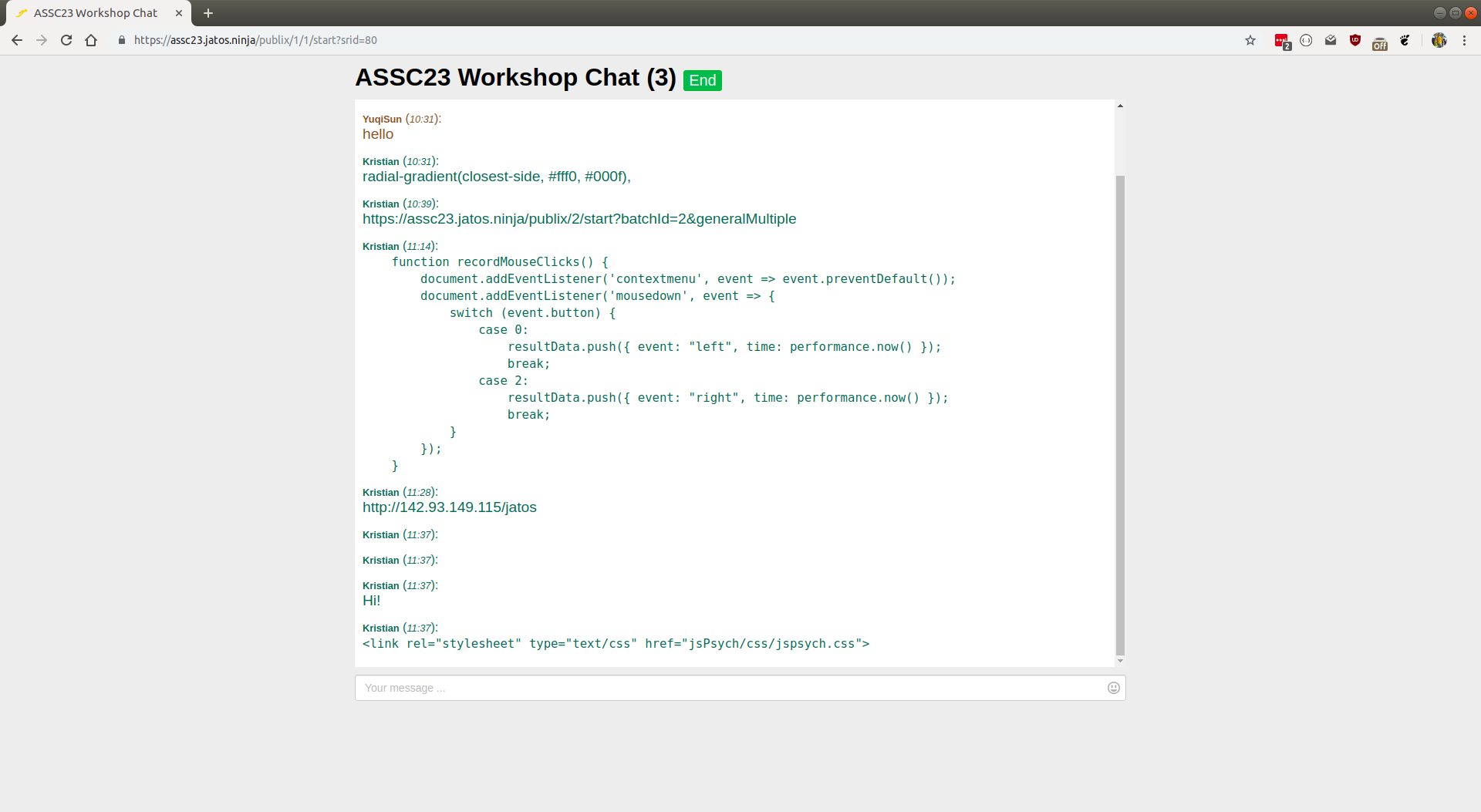 |
| Prisoner's Dilemma § | Game in which two workers interact with each other in the same study run. | - | Group Study, Group Direct Messaging | 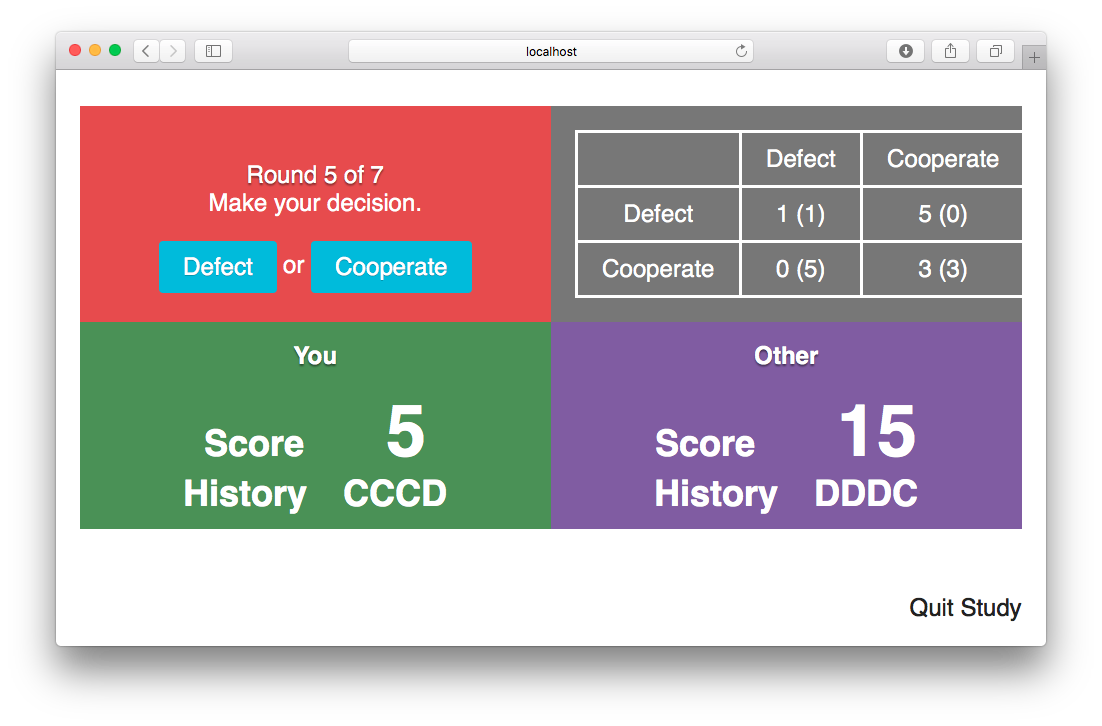 |
| Snake Game ∗ | Multiplayer real-time snake game. | - | Group Study, Group Broadcast Message | 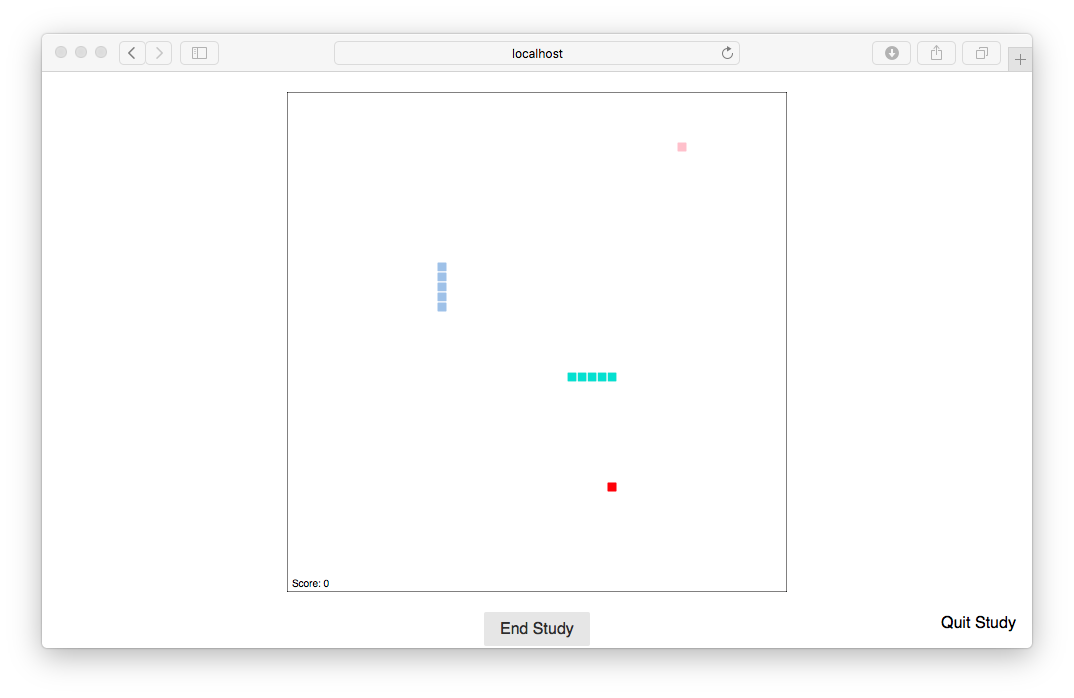 |
| Stroop (PsychoPy) † | Stroop task | PsychoPy | - | 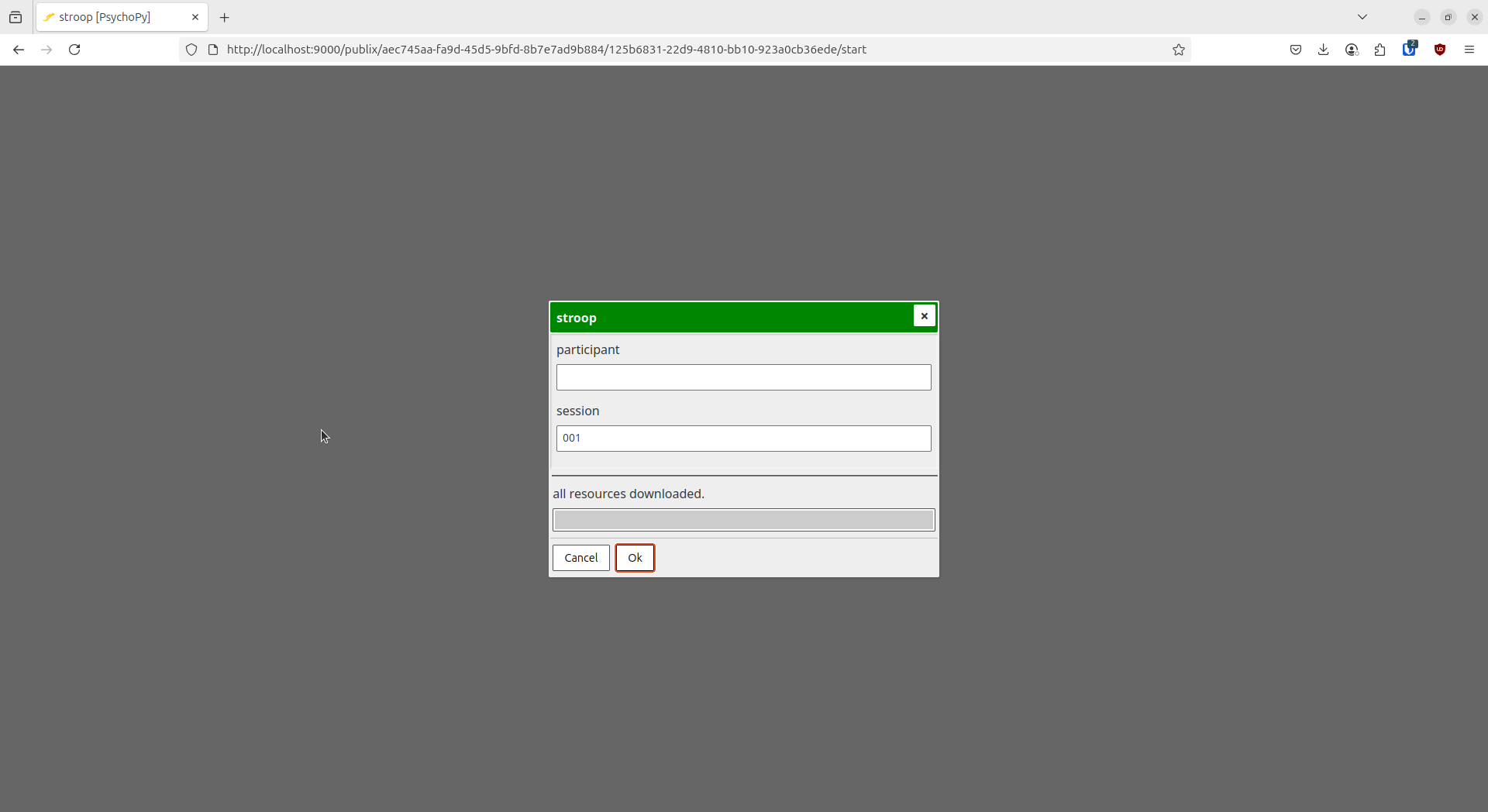 |
∗ Requires JATOS version 3.1.1 or newer
§ Requires JATOS version 3.3.1 or newer
† Requires JATOS version 3.5.1 or newer
Example studies contributed by others
| Study Name | Brief Description | Frameworks Used | JATOS Features | Contributed By | Example Image |
|---|---|---|---|---|---|
| Randomize (Multi-component) Tasks Between Workers § | Template to randomly assign participants to conditions A or B, where each condition is composed of two different components. This is an extension of the "Randomize Tasks Between Workers' example above | - | Batch session | Craig Stark, Ph.D., School of Biological Sciences, University of California, Irvin |  |